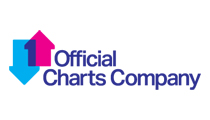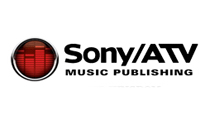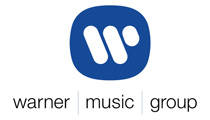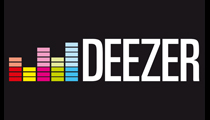This website uses cookies so that we can provide you with the best user experience possible. Cookie information is stored in your browser and performs functions such as recognising you when you return to our website and helping our team to understand which sections of the website you find most interesting and useful.
Wednesday 31 December 2014, 11:24 | By Chris Cooke
Good year for dance and debuts in the UK singles chart
Business News Labels & Publishers
It was a year of pole position debuts and dance music number ones in the UK single charts according to people at the Official Charts Company, who presumably would know. They’re the kings of the counters when it comes to all things popular music, after all.
According to stats from the chart compilers, 2014 saw fourteen singles enter the charts at number one from artists who had never previously appeared in the Top 40. The same number of chart toppers were classified as dance music by the Charts Company, the highest quantity of number ones from the genre in any one chart year ever.
I’m not sure what this tells us. Mainly, I suppose, that the labels still know a few marketing tricks when it comes to scoring number ones for big releases, and those tricks are still working in this here digital, social, streaming age.
Hence continued resistance to the ‘on air on sale’ approach, which aims to reduce pre-release piracy by having tracks available from all channels as soon as they are serviced to radio, but which would hinder label efforts to build hype ahead of official release in order to boost chart position.
And as for the continued popularity of all things Eeeee Deeeee Em, well, people just can’t kick that need for bleep. Which is good news for the bleep makers. Or something like that. I don’t really know what I’m saying here, so I’m just going to hand over to charts chief Martin Talbot.
Here he is: “The Official Singles Chart got people off their feet more than ever before in 2014, thanks to a record number of dance number ones. And, with so many new acts debuting at number ones, it sounded fresher than ever”.
Hmm, I’m not sure he really knows what he’s saying either. I know, let’s have two lists, one of the biggest selling dance number ones of the year, and the other a top ten of artist debut chart toppers, all lovingly compiled by Talbot’s team of pop number fiends. What a joyous way to end 2014.
Top Selling Dance Number Ones Of The Year
1. Clean Bandit feat Jess Glynne – Rather Be
2. Mr Probz – Waves
3. Route 94 feat Jess Glynne – My Love
4. Sigma – Nobody To Love
5. Kiesza – Hideaway
6. Duke Dumont – I Got U
7. Calvin Harris – Summer
8. Lilly Wood & Robin Schulz – Prayer In C
9. Sigma feat Paloma Faith – Changing
10. Calvin Harris feat John Newman – Blame
Top Selling Debut Number Ones Of The Year
1. Mr Probz – Waves
2. Ella Henderson – Ghost
3. Route 94 feat Jess Glynne – My Love
4. Sigma – Nobody To Love
5. Kiesza – Hideaway
6. Sam Smith – Money On My Mind
7. Lilly Wood & Robin Schulz – Prayer In C
8. Ariana Grande feat Iggy Azalea – Problem
9. Sigma – Changing
10. Oliver Heldens feat Becky Hill – Gecko (Overdrive)
READ MORE ABOUT: Official Charts Company
Tuesday 30 December 2014, 12:19 | By Chris Cooke
Thom Yorke album now available via Bandcamp
Business News Digital

Having shaken the world – well, at least one tree – by opting to release his most recent solo album direct to fans via BitTorrent’s new content sales platform (cutting out all those pesky “self-elected gatekeepers” in the process, of course), Thom Yorke has now opted for a less revolutionary revolutionary way of selling his music, by whamming it all up on Bandcamp, like every other direct-to-fan artist in the world (well, apart from those using ReverbNation, Music Glue etc).
Hypebot has noted that Yorke is now selling ‘Tomorrow’s Modern Boxes’ in full and a whole brand new track too via the popular direct-to-fan set up. He’s opted to offer the album on a pay-what-you-want basis – an approach which, to be fair, did seem pretty revolutionary when his band Radiohead did it in 2007, but which is pretty common on Bandcamp now – though this time he’s added a minimum price-point, also common on the D2F site, of $6.99. A vinyl version of the record is available from the same web page for £30.
While setting up shop on Bandcamp likely won’t grab the headlines Yorke was assured by opting to use that new delivery system developed by BitTorrent, a company whose technology is more associated with music piracy, arguably this D2F store is much more fan-friendly.
Read our interview with Bandcamp’s Editor At Large Andrew Jervis about recent developments at the service here.
READ MORE ABOUT: Bandcamp | Thom Yorke
Monday 29 December 2014, 15:23 | By Chris Cooke
South Korean music firm accuses The Interview of uncleared sync
Business News Legal

As if the Sony Pictures movie ‘The Interview’ hadn’t been the subject of enough controversy already, two South Korean hip hop artists have accused the film’s makers of using one of their tracks without permission.
The Seth Rogen/James Franco comedy vehicle was, of course, temporarily shelved after unknown hackers, seemingly offended by the fictional portrayal of the assassination of North Korean leader Kim Jong-un in the film, hacked Sony Pictures’ servers and leaked a stack of sensitive files and data.
Subsequent threats by the hackers led to many US cinema chains axing plans to screen the picture, though plenty of independent movie theatres offered to show the film instead, enabling a series of screenings on Christmas Day accompanied by a pay-per-view online release, both in America.
Having seen a copy of the film, South Korean firm FeelGhoodMusic, a company founded by hip hop artists Tiger JK and Yoon Mi Rae, issued a statement saying that about fifteen seconds of a duet recorded by the two performers, called ‘Pay Day’, appears in the film without permission. The company added that discussions did take place regarding the sync, but that the two artists did not approve use of the song in the controversial film.
The statement, issued on Boxing Day, explains: “There were initial discussions about including the song in the film score, but negotiations stopped so we were under the impression that it wasn’t happening. It was only after the film was released that we became aware of the song’s unauthorised use. The artists were hesitant about authorising the use of the music as the film is a very sensitive topic in Korea”.
According to The Hollywood Reporter, the two singers will now likely take legal action against the agency who approached them about the original sync deal proposal, DFSB.
READ MORE ABOUT: DFSB | FeelGhoodMusic | Sony Pictures | Tiger JK | Yoon Mi Rae
Wednesday 24 December 2014, 16:16 | By Chris Cooke
Music business trends in 2014
Business News
This year we launched CMU Premium, a new service for the busy music business professional, providing a handy weekly news digest and regular reports analysing key music business trends. You can read ten articles from this year’s reports below. To go premium and get so much more from CMU for just £5 a month click here.
 The emerging digital spectrum, and the challenge of freemium
The emerging digital spectrum, and the challenge of freemium
The record industry is half way through a decade of digital experimentation, so it’s no wonder the debates have been lively. In this article from the latest CMU Report, we recap digital to date, discuss the ‘digital spectrum’ that is emerging, and explain how the current freemium services screw it all up. [READ MORE]
 As the GRD runs aground, what next?
As the GRD runs aground, what next?
Earlier this year the music publishing sector’s Global Repertoire Database project was shelved. Other than the millions already spent on the venture, why does this matter? This article from October explores the complexities of copyright ownership and why they are hindering the music rights sector in the digital age. [READ MORE]
 What one thing could Google do to placate the labels in 2014?
What one thing could Google do to placate the labels in 2014?
Ah, Google, both a valued business partner and much criticised irritant for the music industry. But what one thing could Google do to placate the record labels? It’s pretty simple, help make web-blocking – the industry’s favourite anti-piracy tactic in 2014 – actually work. In this article from October we explain how. [READ MORE]
 What one thing could the labels do to placate artists in 2014?
What one thing could the labels do to placate artists in 2014?
Have artists ever been so involved in debates about the music industry? Surely not, and that’s a great thing (it’s a good job they can sign up to CMU for the lowdown). Though most artists still feel they are being left in the dark about too many things when it comes to digital. As we discuss in this article from October. [READ MORE]
 How could we better communicate copyright?
How could we better communicate copyright?
When a government-led alliance between the content industries and internet service providers was announced earlier this year yet another commitment was made to educate the masses about copyright. But what does that mean? This article from October reckons the industry should start at home – find out why. [READ MORE]
 The real revolution is direct-to-fan
The real revolution is direct-to-fan
“Don’t let the rise of the streaming services distract you”, said CMU Business Editor Chris Cooke at The Great Escape in May, “the real opportunities lie in direct to fan”. Then everyone got distracted by the rise of the streaming services again. Check this keynote from TGE 2014 on the real revolution in music. [READ MORE]
 Dan Le Sac on what artists really think about streaming
Dan Le Sac on what artists really think about streaming
A stand out session from this year’s CMU Insights-programmed Great Escape Convention was Dan Le Sac discussing our survey of artists on all things digital. Despite the Thom Yorke and Taylor Swift moments, most artists are pro-streaming, they just want to know what the hell is going on behind the scenes. Dan explains in this May report. [READ MORE]
 How to stand out in such a crowded festival market?
How to stand out in such a crowded festival market?
Moving on to live, another strand at The Great Escape this year focused on the ever-crowded festival market, including the results of our survey of music editors on the way major music events are PRed. As promoters start promoting their 2015 festivals, there’s lots of useful tips in this summary of that research from back in May. [READ MORE]
 Ticketing questions of both the primary and secondary kind
Ticketing questions of both the primary and secondary kind
More on the live sector, and secondary ticketing continued to be a subject of debate this year, mainly in the Houses Of Parliament. Though elsewhere, as much was was said about the issues many consumers have with the primary ticketing market. This article from March considers both of the ticketing debates. [READ MORE]
 Game Changers at M For Montreal
Game Changers at M For Montreal
CMU visited the M For Montreal festival last month and caught up with the five experts who discussed digital innovations and developments at the event. Read interviews with each of them here, on making digital music visual, the impact of streaming on radio, and developments in direct-to-fan, music-making tech and digital marketing. [READ MORE]
READ MORE ABOUT: Copyright | direct to fan | Festival PR | Global Repertoire Database | Google | primary ticketing | Secondary Ticketing | Streaming Music
Wednesday 24 December 2014, 10:58 | By Chris Cooke
Leaked emails show recent discussions about possible Sony/ATV sale
Business News Labels & Publishers
Sony Corp has been secretly considering a sale of its music publishing business Sony/ATV according to Bloomberg, which cites emails leaked as part of the hack attack on Sony Pictures in the US. Emails to and from Michael Lynton, who heads up Sony’s US-based entertainment business in general as well as the group’s film studios, apparently refer to such discussions.
Concerns about the future growth potential of the music publishing sector as it tackles the challenges of digital are expressed from some at Sony Corp HQ in Japan, while complexities in the ownership and governance of the Sony/ATV business are also cited as reasons to cut it loose.
Unlike the Sony Music record company, which is owned by Sony Corp outright, Sony/ATV is a joint venture with the Michael Jackson Estate. Meanwhile half of the business is actually EMI Music Publishing, which Sony/ATV and the MJ Estate co-owns with a number of other shareholders.
From the leaked emails, discussions about the future of Sony/ATV do seem to be in a very early stage, with one exec expressing concern when the topic is included on the agenda for a wider top team meeting, saying all talk about a sale of the group’s music publishing assets are “top secret”. Though not now, of course.
It being the world’s biggest music publisher, there’d almost certainly be quite a bit of interest in Sony/ATV if it was put on the block. And if it became a totally independent entity, that could have some interesting affects on the wider music rights sector.
Sony/ATV chief Marty Bandier is already hitting out at how much money the publishers make from streaming services, and while that is partly about getting the digital service providers to pay more to the music rights community overall, it’s also about altering the way existing streaming revenues are split between the publishers and the labels (the vast majority currently goes to the latter).
While Sony/ATV is in common ownership with the world’s second biggest record company, pressure might be put on Bandier to hold back from all out war with the DSPs and labels, certainly this side of Spotify’s flotation, from which Sony Music will earn big time as a result of its minority stake in the streaming firm. But an independent Sony/ATV might be more willing to green light a nuclear attack on a streaming sector many songwriters and publishers reckon has been structured to benefit DSPs and labels at their expense.
READ MORE ABOUT: Sony Corp | Sony Music Publishing
Wednesday 24 December 2014, 10:00 | By Chris Cooke
Irving Azoff is ready to step up his battle with YouTube
Business News Digital Labels & Publishers Legal
At last week’s Music Publishers’ Association Christmas lunch the trade group’s CEO Sarah Osborn used her customary speech to make an explicit commitment that her organisation would be leading the charge next year to get songwriters and publishers a better deal from the streaming sector.
Osborn is far too nice and the MPA far too respectable to say it, but basically 2015 is lining up to be the year when the songwriters and music publishers throw a massive “fuck you all” in the general direction of the streaming sector, which they believe has been structured for the sole benefit of the digital service providers and the record labels. And leading the charge, or at least testing the water, is veteran artist manager Irving Azoff.
As previously reported, Azoff has set up a new company called Global Music Rights which is seeking to directly represent the so called ‘public performance rights’ – in the US, at least – of the songwriters he manages and some other big names too. The aim is to pull those songwriters’ works out of the American collecting societies BMI and ASCAP and force the big licensees of songs to do deals directly, away from the rules and regulations that come with collective licensing.
As also previously reported, this has led to Azoff initiating a battle with YouTube, which, he says, must remove all the songs GMR now represents from its various platforms with immediate effect until it successfully negotiates a licence with his new company. Azoff’s attack on YouTube conveniently coincided with the Google subsidiary unveiling its new Music Key service, ensuring the video site’s big new play in music was accompanied by plenty of controversy before and after launch.
The feud is ongoing, with Azoff’s lawyer Howard King providing something of an update this week, and reaffirming the threat that GMR is willing to go legal on all this in what he is calling a billion dollar infringement lawsuit.
There are currently two elements to the dispute. First, although GMR has seemingly withdrawn the public performance rights of the songwriters it reps – which include Eagles, Pharrell Williams and John Lennon – from their respective collecting societies in the US, it’s not entirely clear when that actually means YouTube no longer has access to those songs through its blanket licences from ASCAP and BMI.
Such licences customarily keep running until a pre-agreed date, even if there are changes in the repertoire each society represents. But, again showing the ambiguities that exist in music licensing, no one seems to be able to tell GMR whether that means YouTube is still allowed to use its songs or not. Though King says the obligation is on YouTube to prove it is licensed, and so far it has not.
But this dispute seems set to really focus on YouTube’s obligations to remove songs uploaded by users to its platform under American copyright law, a familiar debate that has been had several times before, usually with YouTube’s interpretation of the Digital Millennium Copyright Act prevailing. That interpretation says that providing YouTube offers a system via which rights owners can order content be removed, it isn’t liable for all the copyright infringing materials that are routinely available via its user-upload sites.
In a recent exchange of letters between King and Google, the latter said that GMR needed to identify where its songs were currently residing on the YouTube system and then issue a takedown notice for each URL as described in the DMCA. Basically GMR, like the labels, needs to use YouTube’s ContentID system to manage its songs on the firm’s platforms.
King disagrees, citing some of the debate that has surrounded other legal cases where tech firms hosting infringing content have used the safe harbours of the DMCA to avoid liability. YouTube is aware of the infringing content so has an obligation to remove it even without a specific takedown notice, King reckons. It’s a very grey area of American copyright law that is yet to be properly clarified in court.
But King is seemingly ready for a fight. He told The Hollywood Reporter: “It is disingenuous that they can keep their hands over eyes until we tell them the URL. They know where it is. We don’t want this to become whack-a-mole”. Talking tough, he goes on: “This will result in someone blinking, and if it is not them, there will be a billion dollar copyright infringement lawsuit filed”.
So that’s something to look forward to, right? Obviously GMR wants to force YouTube to the negotiating table where Azoff will ask for more favourable terms for his songwriters.
In its more recent negotiations with the record companies YouTube has generally taken the attitude that the labels need its platform as a marketing channel, tipping the balance of power in the royalties debate in its direction. Azoff, though, is more likely to say screw the marketing benefits, which will weaken Google’s negotiating hand. Though the web giant will be aware that if it gives more favourable terms to Azoff’s band of song creators, plenty more will come knocking for a similar deal.
READ MORE ABOUT: Global Music Rights (GMR) | Howard King | Irving Azoff | YouTube
Tuesday 23 December 2014, 16:26 | By Chris Cooke
Warner announces alliance with interactive video firm
Business News Deals Digital Labels & Publishers
Warner Music has announced a partnership with Interlude, a tech set-up that specialises in creating and delivering “personalised interactive videos”. Under the deal some of Warner’s artists will work with Interlude to create “amazing and immersive experiences in real-time”, whatever that means, with the plan to sell sponsorship and advertising around the content, which may or may not also be amazing and immersive.
Confirming the deal, Warner’s COO Rob Wiesenthal told reporters: “Great videos not only complement songs, but deepen the emotional connection between artists and their fans. Interlude’s technology enables a level of seamless fan engagement that has never before been possible. This venture is both an interactive canvas for our artists and a new way for fans to share customised videos”.
Meanwhile, Interlude CEO and co-founder Yoni Bloch, himself a music maker, added: “Our team is extremely passionate about offering the most creative storytelling opportunities for today’s artists because we started out as musicians ourselves. We are thrilled to partner with the innovators at Warner Music Group, which shares our vision of all-encompassing interactivity. Music is just the beginning. As artists and creators increasingly recognise the power of interactive video, the public and advertisers will surely follow”.
Warner, once seen as the hold-out when it came to new digital platforms, has been pretty busy in the deal-making game this year. Earlier this month it was announced as the first music partner of Vessel, a new online video-on-demand service with free and subscription options that will specialise in short-form content, so is seen by many as more of a competitor to YouTube than Netflix et al.
READ MORE ABOUT: Interlude | Warner Music
Tuesday 23 December 2014, 14:00 | By Chris Cooke
Trends: Game Changers – innovation, disruption and new music technology at M For Montreal
CMU Trends Digital

CMU’s Chris Cooke attended the recent M For Montreal convention in Canada and while there five experts with very different perspectives on recent digital developments shared their insights with him.
THE STREAMING SECTOR:
Visualising the streaming experience with OpenAura’s Marisol Segal
Beyond the licensing squabbles, and the question as to whether or not YouTube really can turn its massive freemium audience into music subscribers, the other thing the video site’s new music set-up will do is make the streaming experience more visual. Something its sister service Google Play has been slowly evolving for sometime. And even if YouTube Music Key flunks, that’s a trend that is likely to be seen across the market. [READ MORE]
RADIO & STREAMING:
What does the rise of the streaming sector mean for radio with Alan Cross
As someone who has written about, talked about and championed new music for decades, and who has closely monitored developments in the digital music space over the last fifteen years, Canadian broadcaster Alan Cross could input into our overview of digital trends in multiple ways. But I was most interested in what he thought about the clash that is occurring between the rapidly rising streaming services and his own industry, that of radio. [READ MORE]
DIRECT TO FAN:
Direct-to-fan developments with Bandcamp’s Andrew Jervis
Despite the booming streaming music market – and the very vocal debate about the pros and cons of freemium and premium subscription services that has rumbled on for much of the year – for me the most exciting development in music enabled by the internet remains direct-to-fan, and the ability for artists and their business partners to better service core fanbase, who are often willing to spend more money on their favourite acts if only the industry provides the products and services on which they can spend. [READ MORE]
MUSIC MAKING TECH:
Rapid evolution in music making tech with MixGenius’ Justin Evans
Most debate on the digital music revolution centres on consumer-facing platforms – download stores, streaming services and direct-to-fan channels – which make it simpler for fans to access music, and much easier for artists to get their tracks out into the wider world (even if the challenge of then finding an audience remains). [READ MORE]
DIGITAL MARKETING:
Standing out through innovations in content and tech with Powster’s James Swindells
Not only has digital become the primary way many consumers buy or listen to music, digital channels are now also key to the music industry’s marketing campaigns, and just as new technologies mean digital music consumption is constantly evolving, the same is true of digital marketing. [READ MORE]
READ MORE ABOUT: Alan Cross | Andrew Jervis | Bandcamp | James Swindells | Justin Evans | M For Montreal | Marisol Segal | MixGenius | OpenAura | Powster
Tuesday 23 December 2014, 13:11 | By Chris Cooke
Trends: The emerging digital spectrum, and the challenge of freemium
CMU Trends Digital

The highly public debate initiated by Taylor Swift’s withdrawal from Spotify last month ultimately led to the usual chattering about what royalties, precisely, any one artist is earning from any one digital service as compared to another. But it also brought a much more interesting element of the digital music discussion to the fore. What should freemium look like? It’s an important question that will play a key role in how the digital market will mature in the next five years.
THE STORY SO FAR
If we take 1998 as the year when the potential of digital music first began to become apparent – the world wide web and MP3 having emerged earlier in the 1990s and the first few digital music start-ups, notably MP3.com and eMusic, having just launched – for much of the following decade the major music companies’ default response to most proposed digital business models seemed to be “no”.
Indeed, for the next five years major record company executives seemed to be in denial (digital would never go mainstream like the CD), or protectionist mood (CD sales must be protected from rising online piracy) or control freak mode (if digital music channels have potential, we should control those channels). Needless to say, none of these strategies worked.
During these first five years an assortment of digital music start-ups – mainly though not exclusively download-based – came to market, though few secured major label content (and some had only unsigned artists). But one player, Apple, managed to persuade or bully the majors to come on board, and so in 2003 the iTunes Store went live in the US. The majors insisted on digital rights management technology being added to Apple’s proprietary file format, but initially conceded to the IT giant’s one-price-fits-all 99-cents-per-download approach. Which looked good on a poster.
It’s fair to say, the iTunes Store worked. In fact, it really worked. Especially in the US and the UK. And for most of the next five years, when it came to new digital businesses, the majors said “yes” to anything that replicated iTunes, but remained resistant to anything else. Which was, in theory, good news to those with ambitions in the download space, though the continued insistence by the majors on DRM meant start-ups couldn’t sell MP3s, which meant their music wouldn’t work on the market-leading iPod, which made it all but impossible to succeed.
There were some exceptions to this “yes if you’re basically iTunes, no if you’re anything else” policy. The majors did license subscription-based download platforms, like the original legit Napster product, which operated much like the streaming services do on mobile today, though these never really took off.
And in the US, the majors were obliged by copyright law to license interactive radio services like Pandora, and through the Sound Exchange system where rates were set by a copyright court, so these did start to gain some momentum.
Plus some more innovative start-ups went with the “launch now license later” approach and subsequently scored major label deals, though said start-ups always risked being sued out of business if they couldn’t get the record companies on side.
But it was around about 2008 that you really sensed there was an attitude change at the major music firms. Maybe it was because more digitally savvy execs had reached positions of power. Or because digital channels had become such an important part of the labels’ marketing mix, digital at large was being embraced across the business.
Or perhaps it was simply because, after ten years of declining CD sales, the powers that be finally realised that making decisions based on propping up that one revenue stream was pointless.
Whatever, it seemed that from this point onwards, if presented with a new business model that heavily skewed away from or even competed with the iTunes approach, the start point for the majors became “maybe”.
Albeit “maybe” with a big proviso. “Maybe” providing you were a well funded start-up, tech giant or media firm able to pay significant upfront advances and, in the case of the new companies, willing to throw in a bit of equity assuring a big pay day if your business succeeded down the line.
But nevertheless, the shift to a default position of “maybe” was important and liberating. And you sensed that what the major record companies were basically saying circa 2008 was: “The future of this industry is digital, and likely not just iTunes digital, but we’ve no idea what this digital future looks like, so let’s do as many deals as we can, get as many experiments off the ground as we can, and screw as much upfront cash and equity as we can out of all our licensees, and hope that in ten years time something tangible and sustainable comes out of all of this”.
The big advances and equity have not been without controversy, of course. First, because the majors got them and the indies didn’t, though the creation of Merlin secured some parity for the independents.
Second, because artists are unlikely to get a share of any pay-back from the equity, and with many in the artist community already annoyed with the royalty splits they are being paid on streaming income and the secrecy surrounding the record industry’s digital deals, that’s going to be an issue when Spotify goes through with its IPO.
And there is an argument that, by insisting on big advances and equity, the labels have limited how many digital services can get to market, meaning some interesting start-up business models never got tested.
But all that said, there was a logic to the strategy the big record companies began employing towards the end of the last decade.
Let the tech and start-up community experiment, make as much money as you can during the experimental stage, cash in your shares from those few services that actually work, and let others take the risk over which digital platforms have legs. While the labels focus on their own risk management business, the risky business of investing in new recording artists and creating new content.
If we agree that the big rights owners changed their policy on digital innovations in 2008, and in doing so began a ten year experiment in 2009, then we’re now half way into that experimental decade. So where does it look like things are heading? And how, exactly, will freemium fit into the mix?
A DIGITAL MUSIC SPECTRUM
There are currently three main digital music business models: the iTunes style download store (the ‘ownership’ model), the Pandora-style interactive radio service (what digital music analyst Mark Mulligan calls the ‘listen’ model) and the Spotify-style on-demand service (the ‘access’ model).
Which of these three service types dominates varies greatly from market to market. The listen services are much more prolific in the US, mainly because – as previously mentioned – a compulsory license under American copyright law forced to the record companies to license the likes of Pandora early on at rates set by the copyright courts. Whereas in Europe the fully on-demand access services have enjoyed more success.
Though, it’s worth noting, while iTunes music sales seem to have peaked and are now declining, the ownership model is still the single biggest revenue generator in the US and UK. Whereas in Sweden and Norway, where iTunes-type downloading never really took off, on-demand streaming is already the biggest service type.
In terms of payment models, the download market is predominantly pay-as-you-go, in that you pay individually for each track you download, though some niche subscription-based download services do still exist.
In the streaming space there are ad-funded free options and then paid for options, with the standard premium rate set at ten pounds/dollars/euros a month (we’ll give all price points in dollars from this point). Though some services offer limited functionality packages at half that price and others a super-premium level for twenty dollars usually with high quality audio.
While there has been much debate over which of these service types and payment models will dominate long-term, it seems certain that what will eventually evolve over the next few years is a digital music spectrum, with a range of services that may incorporate ownership, listen and access elements. Crucially, across this spectrum there will be a number of different price points, with more variables between free and the current ten dollars a month standard.
Because one of the problems with the current streaming model is that the two main price points are free or ten dollars a month – ie free or $120 a year – which is quite a price jump. And while for music geeks at the labels and digital start-ups $120 a year for ad-free fully on-demand access from multiple devices to a catalogue of tracks in excess of 20 million seems like incredibly good value (which it is), spending $120 a year on music content seems like a massive commitment to the average consumer who maybe bought two or three CDs a year under the old model.
So while sign-ups to free subscription services have been impressive, and sign-up rates to some of the $10 a month premium services – most notably Spotify – are also encouraging, it is likely that a minority of consumers will ever commit to spend $120 a year on recorded music. Yet the options for those looking to spend $20-$60 a year are lacking, meaning those consumers are likely to just opt for freemium. And that group is much bigger than those currently buying into Spotify.
Everyone therefore agrees that, for streaming to go truly mainstream, we need additional price points between free and $10. Spotify has dabbled with a half price intermediary subscription in some territories, originally excluding mobile functionality, though mobile listening has become such the norm that a desktop-only paid-for service is becoming hard to sell.
Pandora’s premium option, being a listen rather than access service, is also pegged at $5 a month, though Pandora’s upsell of freemium to premium is nowhere near as impressive as Spotify’s (reportedly 5% of users pay, compared to Spotify’s 25%), suggesting that the majority see five dollars a month as being too expensive for mere personalised radio.
So what will this digital music spectrum look like? What variables can digital services employ to distinguish between different price points?
VARIABLES
The key question here is this: how can digital services, and especially streaming services, distinguish different ‘levels’ or ‘products’ in order to enable a range of price points?
Functionality: Listen v Access
The most obvious distinction to make is between the aforementioned Pandora-style ‘listen’ services versus the Spotify-style fully on-demand platforms. There is already a price differentiation here, in that Pandora premium is $5 a month whereas Spotify in the US is $10. Rdio currently provides listen with ads on freemium, fully on-demand on premium.
This price distinction is replicated in the royalties paid to rights owners. It’s been standard for sometime that it is cheaper to license a listen service than a fully on-demand access service. (As mentioned, in the US the former can be licensed via the compulsory licence administered by SoundExchange, so the rates are actually set by the copyright courts).
Within the listen level, there might be additional functional distinctions to make between freemium and premium, and different price points. The basic principle with listen is that users cannot pick and choose tracks on demand or listen to full albums. However users may be able to skip songs they don’t like, block certain tracks or artists from ever playing, or exert other controls over what music they listen to.
A service’s licence from the rights owners will usually limit what levels of functionality can be offered (in the US, too much functionality and a service will fall outside the SoundExchange licence), though where additional flexibility is available service providers could use those added functions to upsell to premium, or from one price point to the next.
Functionality: Devices
As mentioned above, at times Spotify has offered a half price subscription where listening is limited to desktop PCs, excluding mobile devices from the service entirely. More recently Spotify has only offered a listen service for freemium users on mobile, trying to entice people to pay for the full experience on their smartphone. And the new paid-for YouTube subscription service, currently in beta, will also be more mobile-friendly than the platform’s existing freemium set-up.
That said, with all the research showing that mobile listening dominates on most streaming services (especially if in-car listening is added into that set), there is an argument that while full mobile functionality can still be declined to freemium users (and therefore used to entice free users to start paying, as with Spotify at the moment), all and any paid-for packages need to be mobile friendly; ie users will begrudge paying even a few dollars a month if they find they can’t use the service on portable devices.
Navigation Tools
Everyone knows that navigating 20 million+ tracks is a challenge even for avid music fans and, indeed, the size of the average on-demand streaming service’s catalogue is arguably actively off-putting for more mainstream consumers, who probably only need access to a few thousand songs at most.
Which is why all streaming services have put so much effort into so called ‘discovery tools’ to help users navigate what’s on offer; a process which, ironically, sometimes involves users signing up to a fully on-demand access service but then using it as if it were a cheaper listen platform.
To date discovery tools have generally been used by streaming services to distinguish themselves from their competitors, rather than to set one price-point apart from another.
With most digital service providers (DSPs) offering a similar catalogue and similar functionality for a similar price, a key differentiator in the fledgling streaming music market has been “our discovery tools are better than their discovery tools” (even though its debatable if anyone has really cracked the discovery thing yet).
But the streaming platforms are yet to really say “look at our great discovery tools, you’ve got to pay a little extra for those”. Possibly because the mainstream consumers the DSPs are currently trying to hook in through freemium are exactly the sorts of people who need help with navigation, and if the discovery aids weren’t there from the start on the free level you’d never get them hooked enough to try and upsell premium.
Content Limitations
For a brief time when the fully on-demand services were first emerging there was some catalogue size bragging – “we’ve got three million more tracks than those guys” – though all the services now have such vast quantities of music the numbers all seem a bit meaningless.
Some services still brag that they are better at providing localised content for each country in which they operate, and there may be room in the market for bragging “we’ve got the best EDM, we’re the ones with all the 1980s pop or 1990s indie”. Though again, this is more likely a USP that can distinguish one service from another, rather than different price points.
Though some do believe that there could be a price point differentiation when it comes to new content; perhaps only top paying users get access to the latest releases. There has been a lot of talk about ‘windowing’ in the digital music space of late, whereby big name artists hold back new material from the streaming services, so that it’s only available on CD or for download for a time (sometimes weeks, though not uncommonly months).
As streaming becomes as big as CD and downloading in terms of users and revenue, this strategy – which, to be fair, is only currently operated by a small minority of big names – possibly becomes problematic (and some would say it already is). After all, ten-dollar-a-month subscribers are amongst the record industry’s best customers, and yet they are being penalised when it comes to new content.
But if the new content of bigger artists was to be held off freemium but made available to premium, that could work. Indeed, there are some windowing pop stars who would likely say they’d go that route in Spotify offered it (Swift’s label has only pulled her music from streaming services where ‘premium only’ isn’t an option for artists).
Spotify would likely argue that for that to work – ie for big new releases to be initially excluded from freemium – the rights owners would need to ensure their new content wasn’t available on user-upload platforms, and especially those that have a claim to being legitimate music services like YouTube, Soundcloud and, even, Grooveshark. Which is a good point and a challenge, more on which later.
Aside from new material, some wonder whether cheaper price points could be built around significantly smaller catalogues of music, given that the more mainstream consumers for whom ten dollar a month seems steep don’t likely need access to 20 million tracks anyway, nothing near that level in fact (indeed, as mentioned, such a large catalogue could actually be a turn off).
Amazon has been dabbling in this space with the music element to its Prime subscription service in the US, providing access to just over one million tracks, while the MusicQubed-powered O2 Tracks and MTV Trax services take the catalogue limitation thing to the extreme offering less than 100 songs at any one time (changing week-to-week).
Amazon’s limited catalogue still seems huge at first glance, though a less-money-for-less-tracks option possibly needs to offer more choice than the current MusicQubed options.
Content Exclusives
In his conclusion to our artist survey on all things digital that we conducted earlier this year, Dan Le Sac predicted that content exclusives will be part of the future streaming music market, with each streaming service offering exclusive new content from big name artists, and thus securing market differentiation Netflix style.
Does that mean the DSP becoming a label and commissioning (and paying for) a new record from a Coldplay, One Direction or Adele that would then only be available to its subscribers, in either the short or long term? Or the DSPs providing a major payment to an artists’ label partner to secure such exclusives?
While Apple is already doing such exclusivity deals in the short-term, it’s debatable whether such arrangements would become the norm in the streaming space, especially if the exclusive content was limited to premium users of a commissioning DSP. Many artists would be squeamish of forcing their fans to commit to $120 a year (or otherwise turn to illegal content sources) in order to have any chance of hearing their new material.
But the DSPs creating their own exclusive music-related content – live sessions, documentaries, festival coverage, guest mixes, seasonal compilations – seems more likely. A move that would basically shift the streaming services more into radio territory (and therefore a move the radio sector is already anticipating with some caution). In a related domain, as more mainstream consumers sign-up to subscription streaming services, expect celebrity-led programming to also come with premium.
Some streaming services are already dabbling in this area, and we will likely see much more of this in the coming years. And while much of this exclusive content will likely be used as a way to distinguish services initially – as Le Sac predicts – it could also be employed to separate price points.
Which would move the DSPs into a model akin to the satellite and cable TV networks: offer just enough extra exclusive content for another one or two dollars a month, and you will hook a certain portion of your subscribers into the next price bracket up. Indeed the DSPs could well adopt the language of the cable networks in communicating these packages.
Audio Quality
This is already being used by WiMP and Deezer to justify getting an additional ten dollars a month out of users (though in some markets they are only currently offering the high quality option, and in those territories it’s really about having a USP over rivals).
Now, the record industry has dabbled with selling recordings at a higher audio quality at a premium price for years now, in both the physical product and download space, with limited success. High quality audio disks remain very niche, even if those who do buy may be high spenders. While in the download space sales of WAV and FLAC files, where available, have been very limited.
But there is an argument that, in the streaming space, high quality audio could secure a bigger if still niche market. Even though many people are listening on devices not capable of delivering high quality audio, and even those who have the kit would likely struggle to spot the difference between a 320kbps MP3 and a CD quality WAV.
But the difference with high quality streaming – over similarly high quality disks or downloads – is that it doesn’t require consumers to invest in new technology, or be able to work out how to integrate FLAC files with their MP3 collection. The sell is therefore much simpler. Basically: “Pay us some more money, press this button, and listen to the music as if you were in the studio”.
It might just work, assuming there are no bandwidth problems, or capacity issues where offline listening requires a file to be downloaded to portable devices. WiMP for certain has been positive about the uptake to its premium premium offer since launching it last year.
A POSSIBLE SPECTRUM
So, there are a number of ways that the digital music providers, and especially the streaming companies, can play around with their products in order to create a digital music spectrum: differently priced packages for different consumers. But what will that spectrum look like in five years time, when this decade of experimentation is over? Well, it’s too soon to say of course, but possibly something like this…
Pay As You Go+
Some reckon freemium and premium listen and access services will ultimately replace ownership-based iTunes-style platforms; that the iTunes store isn’t just reaching a ceiling after a decade of rapid growth, but that it will now follow CD sales and move into a long-term period of decline, ultimately to disappear. Download stores were a temporary phenomenon as music consumption shifted from CDs to streaming, the argument goes.
But others think that a form of download platform will remain for the mid-to-long term. In that the most casual of music consumer will never fully embrace the access model, and would instead prefer to have a freemium radio style service to dip in and out of (somewhere between conventional radio and Pandora), but with the option to download for keeps (on a pay as you go basis) the handful of tracks that they really like each year. The radio element would be ad-funded or loss-leader, or possibly a combination of the two.
Whether this kind of casual music consumer exists below the age of 25 is debatable, though as the iTunes-style business model goes into decline this combo of radio-listen-download might take off for the foreseeable future, albeit servicing an older demographic. Indeed, that combo service maybe the next generation iTunes store, with Apple’s iTunes Radio set up and some elements of its new toy Beats Music better integrated with the download experience.
Of course stream-and-download combos have been tried before with little success. The radio industry tried including single track downloading into the digital radio experience, Spotify added ‘download’ buttons for a while, and some early streaming platforms included some MP3s for keeps in with their monthly price. But it’s possible that the early-adopters were never the right target audience for this kind of combined service, and there may be more potential for it as streaming goes fully mainstream.
Listen Freemium
While listen services may never have been as big in Europe as the US, it seems likely that Pandora-type set-ups do have a future, and could well become the primary way in which streaming music is offered on a freemium basis long-term.
Outside North America, it remains to be seen if this kind of streaming music service gains momentum via: new standalone services (a Pandora for Europe, a role Blinkbox Music currently plays in the UK); or by traditional radio stations moving into this domain as Spotify et al start to take a significant slice of the in-car listening market (ie as iHeart Radio is doing in the US); or by the subscription set-ups making their freemium options listen services (as Rdio has already, and as Spotify currently does on mobile).
For the music rights owners, listen services will always pay less than access platforms, and as this kind of service starts to compete with conventional radio for listeners and advertisers, listen service revenues could start to hit the royalties labels and publishers traditionally received from the radio sector. Though, because of reach and data, listen services do have the potential to get a much bigger cut of the advertiser pound overall than radio ever could, and the music industry will very much share in that.
Listen Premium (1-3 pounds/dollars/euros)
Premium listen services – offering ad free listening and extra functionality like track skipping and occasional full album streams – could be attractive to more mainstream consumers if the industry gets the right price point.
Pandora’s limited success rate in upgrading users from freemium to premium (especially when compared to Spotify’s rate) suggests that five dollars a month is too much for mere personalised radio. Could the DSPs and rights owners make this kind of service work for two dollars a month if appropriate market scale could be reached?
It may also be that its premium listen services that have the most potential to be absorbed by third-party resellers – ie tel cos, ISPs, cable companies or other content service providers.
The bundling of streaming music with other services clearly has a key role to play in future growth of the market (and, indeed,
has already played a key role in Spotify’s recent successes).
Though even with wholesale price discounting, a monthly price point in the region of ten dollars a month limits such bundling to more premium tel co / ISP / cable packages. A two dollar a month service is easier to absorb, and therefore has much more mainstream potential.
On-demand Economy (4-7)
Fully on-demand listening clearly demands a premium over and above personalised radio though – and the music community never wants to hear this – for mainstream consumers a leap to ten dollars is a leap too far. Consumers, therefore, need a middle ground on-demand service.
Cutting out mobile functionality – how Spotify previously enabled a half-price subscription – seems less and less viable as mobile listening becomes the norm. Therefore is seems that limiting access to content may be the way forward. Whether that be providing access to only a few hundred specially selected tracks (a model similar to O2 and MTV Trax), or a million mainly older tracks (the Amazon Prime approach), or leaving out content exclusives.
That said, even if the windowing of major new releases is to become the norm, holding big albums off freemium, it seems likely that said LPs would have to be made available to these economy subscribers too, to justify the switch from freemium to any paid-for level.
Therefore it may be that rather than content being taken away from economy users, additional exclusive content will need to be created for the next level up.
On-demand Premium (8-10)
Which brings us to a level akin to the current market standard price point (though, while the industry might be hoping this level can be subtly increased in price in the coming years, the opposite might actually occur as more players compete for market share).
This level will likely operate pretty much as Spotify, Deezer et al do at the moment, but with extra content to justify the higher price.
If this can’t be simply windowed new releases, then the DSPs will need to start creating and commissioning their own content series to justify full premium subscriptions, and this could well be where we see the most interesting developments in the digital space in the coming years.
On-demand Deluxe (15-20)
While we only have WiMP’s word for the fact that its super high quality premium premium package is pulling in consumers, the fact that it this year entered the UK and US markets operating with this model alone suggests that the company has some confidence that there is a market for high quality audio in return for higher subscriptions.
And for reasons outlined above, this high quality audio market – while likely niche – could end up being a much bigger niche than similar products in the physical and download domains.
And assuming that this audience are higher spenders and, very possibly, geeky early adopters, it may be that these premium premium users are also treated to the latest developments on the technical side, in both how and where streaming content is delivered.
THE PROBLEM OF THE FREEMIUM OF TODAY
And so, there we have the makings of a digital music spectrum for the future, which seems more or less workable, each level with a distinct relatively simple offer to satisfy the appetites of a different part of the market. But – bringing us right back to the Swift debate where we began – a question remains: Where does Spotify’s current freemium offer, let alone the main YouTube platform, fit into this mix?
The problem with Spotify’s current freemium option is that it’s arguably too good, with ad-free and fully-mobile-compliant the only two features held back from free users to entice them to sign up to ten dollars a month premium. And we can probably assume more mainstream users are happy to live with the ads, commercial radio listeners are certainly used to them.
With Spotify freemium users getting fully on-demand music on their desktops, a decent listen service on mobile, and access to Spotify’s full catalogue of over twenty million songs across all devices, it makes it very hard for other competitors to dabble with mid-range subscriptions. What can services offer to justify two or six dollars a month?
But Spotify’s current freemium/premium set up works. For Spotify.
And Spotify would argue that it’s working for the industry at large as well. Yes, Spotify freemium is a very good deal, hence the rapid sign-up rates in most territories. And yes, no one is really making much money out of freemium (rights owners are paid royalties, but a tenth of what they get from premium), but Spotify is turning a quarter of those loss leading users into ten dollar a month subscribers, a much higher up-sell rate than all of its competitors.
So, Spotify’s strategy does seem to work in getting the ten-dollar-a-month market established. But – and this is the problem – in doing so it is arguably hindering the six-dollar-a-month and two-dollar-a-month markets, which are likely to be much bigger in the long term. And that’s a pain if you’re trying to evolve that middle market.
Of course given the ten-dollar-a-month users are more likely to be early-adopters, it perhaps makes sense to prioritise getting them all signed up. But at what point do you put the focus on the middle market instead. Because at that point you’ll almost certainly need to turn Spotify freemium, in its current form, off.
There have been rumours, since the Swift spat, that the labels will try to force a cut back on Spotify freemium as their licensing deals with the service come up for renewal. Spotify will argue that it tried instigating limits on freemium before (eg a ten hours listening cap, a maximum number of plays per track), and that just hit freemium sign-up and usage rates in the territories where the limits were added, which in turn hit premium sign-ups.
Meddling with Spotify’s current strategy, therefore, simply hinders it success rate in getting ten-dollar-a-month subscribers. So let’s wait until they are all signed up, and then do something more dramatic to freemium in order to fuel mid-market subscriptions.
The labels may not want to wait, though as shareholders in Spotify – and therefore having a vested interest in the company having as high a value as possible at the point it floats – they may not want to rock the boat this side of an IPO. After that though, a rethink in freemium seems certain.
But even if the labels and DSPs did eventually move towards the model already employed by Rdio – listen for freemium and fully on-demand for ten dollars – what about the other sources of free content online? And even if, through web-blocking, the labels could limit prolific piracy to a relatively nominal minority, and then through more proactive takedown-notice issuing keep unofficial free streams off sites like SoundCloud, what about YouTube?
The problem with YouTube is that it’s an opt-out service and such an important marketing channel for the labels. No label wants to pull from YouTube, because they’d lose the marketing benefits, and the cut of ad revenue they earn, but would still have to invest time and money policing the site as users upload their content. Google exploits these facts to secure incredibly favourable risk-free royalty rates.
Spotify et al argue that the existence of YouTube is a hindrance for them signing up freemium users let alone premium customers, and that fact is only going to increase as the music and digital sectors focus on the potential mid-market subscribers.
Ideally for the digital spectrum to emerge YouTube also needs to take some features away from its freemium users: cracking down on ad-blocking for starters and possibly limiting some of its playlisting functionality. Quite how that would work isn’t clear; though it’s possible the labels hope that, as YouTube’s own premium set-up rolls out, the Google subsidiary will be more willing to consider such limitations.
And so, it seems certain that there is still plenty of change and debate and trial and error ahead as we enter the second half of the music industry’s big decade of digital experimentation. It’s not unreasonable to assume the pay off – something nearing a viable market in 2019 – can be reached, though some compromises will likely be needed along the way.
READ MORE ABOUT: Streaming Music
Tuesday 23 December 2014, 11:37 | By Chris Cooke
Q&A: James Swindells, Powster
Business Interviews Marketing & PR

This interview from the recent M For Montreal conference appeared in the December 2014 edition of the CMU Trends Report. Buy our reports from the CMU Shop or get every edition by signing up for CMU Premium.
Not only has digital become the primary way many consumers buy or listen to music, digital channels are now also key to the music industry’s marketing campaigns, and just as new technologies mean digital music consumption is constantly evolving, the same is true of digital marketing.
James Swindells works for Powster, a London-based creative agency that works with entertainment companies on innovative content-led marketing campaigns based around social media and other digital platforms. The company grew out founder Ste Thompson’s innovative work in creating banner advertising for music and clubbing clients, with the business now combining it team’s skills in design, animation, film and social media technologies to create marketing campaigns that grab consumer attention and get people talking.
Swindells uses one of his company’s earliest projects to explain how a combination of creative ideas and understanding how social media platforms work can make an artist or album really stand out. “In 2010, we got a call from Warner UK to pitch a campaign for the release of Pendulum’s track ‘Witchcraft’. It had a massive eye on its pack shot, which we felt had a witch-doctor feel about it, and we started playing with ideas around witch-doctors and voodoo and one-person exerting control over another. Which led us to think about how that could be achieved in a digital sense, giving the impression of your computer being taken over”.
“What we came up with was the idea of replicating the user’s Facebook profile” he goes on, “so that they thought they were on that site, but actually it was on our server, so we could do odd and spooky things with it. Warner loved the idea, so we had to start working out how to make it happen. In the end, we had a countdown to the single release, via which users could opt in, giving us the Facebook access permissions we needed, though at this point they didn’t now why. The countdown then continued for a couple of weeks, which was great because by the time the experience occurred most people had forgotten they had signed up”.
“When the countdown was zero, next time the user logged on they could load what we called the Witchcraft experiment. It would load but at 99% would say ‘error, redirecting to profile’. It took the user back onto what looked like their Facebook profile – we had pulled in the content dynamically – but it would look a bit weird. And what was weird about it was that all their friends were posting things like ‘where have you been, you need to get out of here’. And by the time you’ve clocked that as a user, your status starts typing ‘you’ve got to get out of here’, and your profile picture gets static interference, and then the eye from the cover appears, the track plays, ink seems to splurge out onto the profile and the video appears”.
“The point is” Swindells explains, “Facebook is fairly untouchable, you can’t do anything with their design and branding, so the very idea that your Facebook profile has behaved in this way is quite sensational. The response was great, it was the first ever Facebook takeover. Of course Facebook forced it down, but that gave the campaign – and therefore the single release – legendary status”.
It’s a great creative idea for a marketing campaign, though the conclusion of the story – Facebook intervening, and subsequently making it impossible to stage such a takeover again – demonstrates how the kind of marketing Powster does has two levels to it: the need to innovate creatively, as with any marketing campaign, but also the need to keep very up to date with what is and isn’t possible in the ever changing world of social media and other digital channels. Though, whereas those managing Facebook profiles or social media advertising might find the constant changes on the social networks irritating, for Swindells it’s invigorating.
“Changes in social media, in video technologies, and other digital platforms, it actually helps us, because as we learn what is possible with each new development, it inspires new ideas of what we can do with clients. Sometimes in a major way sometimes in a relatively small simple way”.
“To give an example of the latter, a couple of years ago Facebook started putting the five most recent tagged photos at the top of your profile. We noticed that some people were exploiting this, for example taking a panoramic image and then uploading it in bits and tagging each picture sequentially, so they would appear cut across the five photo boxes at the top. It was fun, and we pitched something similar into a few clients. We did it for Justin Bieber, for example, so his fans could create a message to a friend using different words contained within images. It’s a simple example of how something changes and opens up a new possibility. So we are constantly looking at new features and changes in the rules”.
Much of Powster’s work with the major music companies has been about getting people talking – usually starting with existing connected fans, getting them excited again, encouraging them to share with their own networks, and ultimately getting press coverage. There will be the usual ‘click to buy’ buttons at the end of the experience, though it seems the mission is more about grabbing attention.
Though the firm does also look at ways that technological developments can enhance the sell-through too. “On the film side of our business, we have developed apps that pull in show times for screenings at cinemas around you, and then offer an invite function. These apps are built around the movie being promoted, with the artwork and trailer and other content, but by using APIs we pull in listings and booking info local to you. They can then click through to the point of purchase at the cinema. It makes the process of getting excited about a film to finding out about screening times to buying tickets much more seamless”.
While those developments are mainly occurring in the film space, what works for movies could be translated over to music, especially as labels, who tend to be Powster’s main clients, start to take an interest – both commercially and in marketing terms – in the output of their artists beyond download and streams. Meaning that even in the digital marketing space, technological developments are changing the business, creatively and, ultimately, commercially.
This report from the recent M For Montreal conference appeared in the December 2014 edition of the CMU Trends Report. Buy our reports from the CMU Shop or get every edition by signing up for CMU Premium.
READ MORE ABOUT: James Swindells | M For Montreal | Powster
Tuesday 23 December 2014, 11:35 | By Chris Cooke
Q&A: Alan Cross
Business Interviews Digital Media
This interview from the recent M For Montreal conference appeared in the December 2014 edition of the CMU Trends Report. Buy our reports from the CMU Shop or get every edition by signing up for CMU Premium.
As someone who has written about, talked about and championed new music for decades, and who has closely monitored developments in the digital music space over the last fifteen years, Canadian broadcaster Alan Cross could input into our overview of digital trends in multiple ways. But I was most interested in what he thought about the clash that is occurring between the rapidly rising streaming services and his own industry, that of radio.
Because for all the debates that have taken place over whether subscription services are cannibalising download sales, there is also the issue of streaming platforms stealing listeners from radio stations, potentially depriving the music industry of both the royalties it earns from the broadcasters and a key platform that has traditionally been used by the labels to launch new artists and songs.
Unsurprisingly, Cross has been monitoring this trend very closely as well. “Because in radio we work very closely with the music industry, and consider artists and record companies as our partners in many ways, we were obviously concerned when we started to see the rapid rise of online piracy fifteen years ago, and about the impact that was having on the labels. But we were removed from those developments in a way, because we didn’t initially see the internet as a threat to our business model”.
“But that has changed a lot over the last fifteen years” he goes on, “as we realised that AM and FM will eventually go in favour of digital distribution of one form or another. Because we are now encountering a generation that has never known life without the internet, and has never known any type of entertainment to be non-interactive and non-customisable, which means radio is going to have go down this road too. The connected car is also important for us; if you can connect your dashboard to your smartphone and get this great display in front of you, and whatever kind of information and entertainment you want when you need it, all by-passing your AM/FM radio, then we’ve got a problem”.
Traditional broadcasters, therefore, need to look to the emerging streaming music sector and work out what they can learn from these new rivals, and ultimately how they can compete in the interactive customisable entertainment age. All is not lost just yet though, because – despite the impressive subscriber figures – the streaming services, especially if you exclude Pandora and YouTube, are yet to really capture the mainstream market that has always been the core audience for radio, and especially the commercial stations. But it’s this mass market that the streaming start-ups need to engage for their loss-making businesses to become profitable.
For their part, the radio sector probably understands this audience better than many in the digital space, and indeed the music business itself. “A lot of people in the music industry like to think that, if only we can give consumers all the choice in the world, and expose them to all this music that’s out there, then those consumers will all get a better taste in music, and they’ll all suddenly start to like the same artists that we music geeks like. It doesn’t happen. It doesn’t work like that. If you look at the streaming charts already, what is being streamed the most? The big hits, the Taylor Swifts, the Ariana Grandes”.
“And you have to remember, while there are millions of music fans like us, there are billions of people who buy their CDs at the supermarket, listen to the Top 40 radio stations, and probably spent thirty to forty dollars a year on music maximum, because all they want is a song they can sing along too and tap their fingers on the steering wheel to. That’s it. And there’s billions of those people, and nothing is going to make all those people become hardcore music fans, because most of them don’t have the time or the inclination”.
The challenge for the streaming sector is that for this more mainstream audience, twenty million tracks all available at anytime is actually off-putting. “What radio says” Cross notes, “is ‘we’ve listened to all the crap, and we believe – rightly or wrongly – that these are the songs that are good enough for you to want to hear’”. Of course the streaming services hope that their respective discovery tools – whether based on algorithms, social data or, like radio, human curation – replicate that process to an extent, making their services more mainstream friendly.
As those discovery elements become more refined and more mainstream users start to sign up to Spotify et al, that’s when radio will be really under threat. Cross observes that “a lot of commercial music stations – and the US radio sector took this to the extreme – have spent the last twenty years reducing the amount of talk in their programming. They decided that talk was an interruption, getting in the way of the hits. But these stations still have to play the commercials, so you have some interruptions anyway. And that’s where radio is going to lose out – because the streaming services can serve up hit after hit without even the commercials. They can do what commercial radio has been trying to do all these years, only better”.
Therefore, Cross reckons, to compete long-term radio needs to focus on making engaging programmes again. Because radio done well isn’t just about curation, it’s about story-telling. And that story-teller role is more important than ever in the age of the skip button.
“With the streaming services, there is no one to tell you why any one song or artist is important, and why you shouldn’t skip that song after twenty or thirty seconds. And for a lot of listeners, a lot of the time that’s important with anything new, or a bit different. Sometimes you need repeated, unintentional exposure to a song or a genre before you go, boom, I get it, and that’s the problem with the streaming music services”.
“Because the skip button is always there” he goes on. “Listeners can say ‘don’t get it, don’t like it, skip’. Whereas radio has the opportunity to say, right, I’m going to set this up for you, explain who this artist is, I’m going to tell you a story, and I’m going to make the music come more alive for you, so you have additional emotional and intellectual engagement with the song. Offering that kind of context is something that radio can be great at, and which the streaming platforms will find harder to replicate”.
And the music industry at large has a vested interest in the radio sector refocusing on the story-telling role, Cross reckons, because it’s a key way in which radio can help with the all-important passive discovery process, getting new songs into the heads of people who won’t go out of their way to hear the unfamiliar.
“To create a hit song you need to expose it to people enough times until they like it”, Cross says. “The question is, with short attention spans and the skip button, how do we expose an unfamiliar song to people enough times for it to stick? The scary thing is the skip facility, and the data we are now getting about what makes people skip a track ten or twenty seconds in. As a pop songwriter it’s going to be hard to ignore those stats, you’ll look to the same old formulas that keep people’s attention. But that’s not necessarily the best way to create new music”.
The music community at large, therefore, needs story-tellers to help hook people in, which gives radio an edge as the streaming services tread on its territory. Though, Cross notes, “by going the less talk, more hits route, often because it’s cheaper to run, commercial radio doesn’t have as many good story-tellers on its team, the kinds of presenters and DJs who can provide context in an engaging way. And because it’s the smaller local stations that have seen the biggest cut-backs, there is nowhere for new talent to practice their trade before moving into the bigger markets. I think radio at large needs to refocus on that side of its business to prosper alongside the new competitors from the digital domain”.
This report from the recent M For Montreal conference appeared in the December 2014 edition of the CMU Trends Report. Buy our reports from the CMU Shop or get every edition by signing up for CMU Premium.
READ MORE ABOUT: Alan Cross | M For Montreal
Tuesday 23 December 2014, 09:34 | By Andy Malt
Trends: Finally coming on stream – digital developments in Japan
CMU Trends Digital Labels & Publishers

While the Taylor Swift debacle may have instigated plenty of digital music debate in North America and Europe this last month, the discussion has been centred on what kind of digital, and specifically what kind of streaming services, have the most mileage. What will that digital spectrum outlined earlier in this report look like in five years time? Though, that much of that spectrum will be filled with third-party streaming services of the Pandora and Spotify kind is generally taken as read.
Though not everywhere, as yet. In Japan – the world’s second biggest recorded music market – there is almost no streaming sector to speak of, with none of the big global names in streaming music currently operating there. Of course, there can be a perception in the West that Japan is a land of milk and honey where CDs still sell by the boatload and consumers have never really taken to digital music at all. But the truth is far more complicated, shown in the significant drop in the Japanese record industry’s income in 2013, a significant slide that dragged down an otherwise flat performance for the global business.
During this year’s Tokyo International Music Market conference, CMU’s Andy Malt spoke to key players in the Japanese music market to work out what’s going on, both in the physical market, and in the download and, especially, the streaming domain.
The Japanese music industry has always been different in many ways to that of Europe or North America, though the differences have only increased as the European and American industries have gone digital. While various labels claim ‘major’ status in Japan, there are four key companies at the top level: the Japanese divisions of Warner Music and Universal Music, Sony Music Japan (a sister company to the US-headquartered Sony Music Entertainment) and Avex. And developments in the Japanese digital space have been led, or delayed, by these four companies. And of late by disagreements between them.
A MORE RESISTANT PHYSICAL MARKET
It is true to say that the physical market held up longer in Japan than in most Western countries.
Traditionally the big Japanese record companies have had a great deal of control over their market. Most notably, CD prices have a fixed minimum price. This has been key in the physical market holding up much longer; people often forget that, while overall units were falling too, the UK recorded music market, for example, also had to contend with falling profit margins on every record sold, thanks to loss-leading supermarkets and VAT-dodging online stores piling pressure onto high street retailers.
Other factors that have helped keep the physical market stronger for longer include music DVD sales, which have held up much better in Japan and taken up some of the slack as CD sales did start to slip. Meanwhile some pop acts have helped keep CD sales buoyant by putting tickets for meet and greet events, and other incentives, into the package.
Most successful in this area are the girl group AKB48. A somewhat unique pop franchise, AKB48 have over hundred members at any one time, with an A-team at the front. This makes organising meet and greets on a prolific scale more realistic, while fans are also encouraged to vote on which of the wider membership are elevated to the A-team, with voting slips only available with the band’s CDs. Which means fans buy disks in there tens, sometimes hundreds (it also means copies of the CD stripped of tickets and voting slips often go for 20p a time on the second hand market).
Where these tactics to keep physical sales both up and at a premium price have worked, the impetus to move over to digital is less; indeed downloads let alone streams may be actively avoided. Aya Yamauchi of AKB48’s label King Records openly admits that the company is “very conservative towards digital”, noting that the split between physical and digital revenue for the company is still around 80/20.
But, while Japan’s physical market may have held up better than most, it is still in decline. The Japanese music industry’s future in definitely digital; the question is, what will that digital market look like?
JAPAN’S DIGITAL MARKET
There are, of course, some digital services in Japan. And thanks to the rapid growth of iPhone usage in recent years, iTunes is now the biggest. Though the Apple service has had to cross a number of hurdles since launching in Japan in 2005, having met strong resistance from both labels and management companies. Indeed, in order to make its first label deal, Apple had to concede to set a fixed-price per-track rate way higher than everywhere else in the world (around US$2.50 per track).
“Apple doesn’t compromise easily”, former iTunes Japan director Keith Cahoon told CMU, noting how much resistance the company came up against. And even now, he explained, management company and record label Johnny & Associates – which represents most of Japan’s biggest boybands – will not allow any of its content onto the service.
And Sony was a particularly tough label to crack too, he admits. A standalone business separate from the worldwide Sony Music company, Sony Music Japan fiercely defends its turf. “They hate Apple for killing the Walkman” Cahoon said, “and they hate Universal from growing bigger than them”. Though ultimately, he reckons, “Japanese labels just want transparency and to know that they’re going to be paid properly”.
While iTunes and therefore the download model, having finally gained some pace, has now taken a lead, there are some streaming services operating in the Japanese market, including the Sony Entertainment Network and Taiwanese streaming set-up KKBOX. Though these are fundamentally different to the likes of Spotify, in that label restrictions mean there are no playlist functions and users are required to access full albums.
Of the various reasons given for Japan’s reticence in licensing streaming services in general, and especially those taking the more flexible Spotify approach, one given over and over again by those operating within the local digital market is ‘business culture’. Many people noted that labels in the country pride themselves on reaching a consensus before making a move into bold new territories, and it’s been hard to reach a consensus on this.
Or, perhaps, no one wants to be seen to be breaking from the pack first. A representative of one streaming service said that most of the labels he spoke to in Japan were actually now in favour of licensing their content, though most would then say that they would rather come in on the “second wave”, rather than be there at launch. Of course most streaming companies in Europe and America are of the opinion that all the big players need to be on board from launch for the all important early adopters to embrace their services.
There are a growing number of Japanese labels making their music available on streaming services outside Japan though. Shotaro Kaizuka of Nippon Columbia (the independent Japanese division of the otherwise Sony-owned Columbia label) explained that he was making his new girl group Chu-Z available on digital services globally “because I want people to be able to access their music”.
As for his home market, he added: “I think Japan should embrace the foreign streaming services, because we need the competition here. But most labels are very closed to that idea at the moment”.
Certainly none of the key streaming players elsewhere in the world – Spotify, Deezer, Rdio, Beats, Pandora or WiMP/Tidal – seem anywhere near close to arriving in the world’s second biggest recorded music market. Though when it comes to partnering with those companies within Japan, rumour has it that there is a fundamental split between the four above mentioned majors, two want the international services in, two are not so sure.
STREAMING IN JAPAN
Last year saw the launch of Recochoku Best, a streaming service spin-off of mobile download store Recochoku. Although seen by some as Japan finally warming to the idea of streaming music, it is notable that Recochoku was set up some of the key record labels themselves – Sony, Avex, Universal, EMI and Victor – and was, and is, a service for pre-smartphone mobiles. That this key development was still happening under the Recochoku banner actually suggested that the labels were as keen as ever to control the market.
Though more recently Universal has pulled out Recochoku, selling its stake to mobile operator Docomo. Discussing that decision, General Manager of Digital Business Development at Universal Japan, Takayuki Suzuki, said that the company felt it was now better to focus on licensing smartphone-based services like Spotify and Rdio.
Warner Japan also seems more focussed on working with the global services. Suzuki reckons that that’s because, as divisions of worldwide record companies, Universal and Warner are able to see the bigger picture; and that the Warner and Universal labels in Japan feel closer now to their sister divisions around the world than ever before. But on the other side of the table, Sony and Avex have created their own domestic streaming service Line Music, in partnership with popular messaging platform Line.
That service does shift streaming over to smartphones, but once again the labels are in control. Albeit fewer labels. Opinion is divided on what impact Line Music will have. Norikazu Yamaguchi of artist management company Bug Corp says he believes the move is a bad one, which will ultimately fail and only hold up the launch of the global streaming services in Japan even further.
All of which means the Japanese market is in a challenging position. The physical market is now following the trend seen worldwide, but a late-to-the-party download market isn’t really positioned to take up the slack, even in the short term.
As with other markets where iTunes never quite reached the heights seen in the US and UK, streaming is key to near future growth, but – unless one of those domestic services really can fly – that whole domain will remain stunted until the global services can get fully established.
READ MORE ABOUT: Avex | Japan | Line Music | Sony Music
Tuesday 23 December 2014, 09:18 | By Chris Cooke
Trends: What is it about 1972?
CMU Trends Labels & Publishers Legal

So why, you might wonder, is the year 1972 currently so important in the US record industry? Well, because of the complexities of American copyright law. And ongoing disputes over what American copyright law says about sound recordings that pre-date 1972 could increase the royalty bills of services like Sirius XM and Pandora. But the precedents being set in court could also have wider implications on how public performance licensing works in the US.
PERFORMING RIGHTS UNDER US FEDERAL LAW
The starting point of all this is the distinction between US-wide ‘federal’ copyright law, and state-level copyright laws across America.
When it comes to sound recordings, federal law only covers material released after 1972, which means that the copyright in recordings from before that date is regulated on a state-by-state basis, according to each state’s copyright rules.
Federal copyright law is unusual, certainly compared to the European system, in that it deprives the owner of sound recordings one of the common elements of copyright, the public performance right (what is often called the ‘neighbouring right’ in record industry).
Copyright law gives copyright owners a number of ‘controls’ over the content they own; in English law these controls are called the ‘acts restricted by the copyright’.
The controls vary from system to system, but commonly include the exclusive rights to copy, perform in public and adapt. Subject to a handful of exceptions, if anyone other than the copyright owner wants to copy, perform or adapt a creative work, they need the permission of the rights owner, who will usually charge for it. This is how copyrights make money.
The public performance right means that anyone wanting to perform a song or play a recording of a song in public needs a licence (or multiple licences, where there is both song and recording copyrights at play). And that requirement extends to shops, bars, clubs and any work place where music is played, as well as broadcasters who play music as part of their output. Public performance licences are usually obtained from the music industry’s collective licensing system.
Federal copyright law in the US pretty much follows this pattern except when it comes to sound recordings, where the public performance right is specifically excluded from the package, unless the public performance takes place via a satellite or internet-based channel, such as the Sirius network or Pandora. There are historic and global treaty reasons for this quirk.
This means that while shops, bars, clubs, work places and, most importantly, radio stations are obliged to get licences from the music publishers – who control the separate copyrights that exists in songs – they are not obliged to pay any royalties to the sound recording rights owners, aka the record labels. Which is why there is no direct equivalent of the UK record industry’s performing rights society PPL in the US.
Needless to say, the record industry doesn’t especially like this quirk of American copyright law, especially now that the labels are looking for every possible extra revenue stream to compensate for declining CD sales. And in most other recorded music markets public performance income has been growing in recent years.
So there has been much lobbying effort in recent times to bring the US copyright system in line with Europe on the public performance of sound recordings, though so far without result. The broadcasters – a strong lobby in America – will always argue that the labels get free promotion for their artists and records from airplay, and so shouldn’t expect to earn a royalty as well.
THE DIGITAL DIMENSION
The satellite and online radio services aren’t that keen on the current system either. They argue that they compete head on with the traditional AM and FM broadcasters for listeners and advertisers, but have to pay a whole extra layer of royalties (ie to the labels), giving their terrestrial rivals a significant unfair advantage.
Occasionally Sirius and Pandora pretend they’d be happy with the system if the traditional broadcasters were saddled with the same recording royalty bills, but really they would like for their extra licensing obligation to be removed. “Think of all the promotion we provide the labels’ artists” they might muse.
On the flip side – and also unique to the US – while copyright law obliges Sirius and Pandora to get licences from the labels as well as the publishers, it also obliges the record companies to licence through the collective licensing system managed by SoundExchange.
Such so called ‘compulsory licences’ mean that labels can’t walk away from the negotiating table when agreeing terms with the satellite or internet radio services, weakening their hand considerably. In fact, with SoundExchange licenses the rates are set by the American copyright courts anyway.
As an aside, while the labels are obliged to licence Sirius and Pandora via SoundExchange, the satellite and digital service providers are not obliged to use that licence, and can try and cut deals directly with rights owners if they so wish.
Indeed, Pandora recently secured such a deal with Merlin, while iHeartMedia – the biggest traditional radio station operator in the US previously known as Clear Channel – has cut some direct deals with labels where it gets better rates for its growing online service iHeartRadio in return from providing rights owners kick-backs from its AM/FM business.
But in the main services like Sirius and Pandora are licensing sound recordings via SoundExchange, and therefore lobby whenever they can for the compulsory licence rates to be amended downwards (a rate review is ongoing as we speak), while also looking for technicalities that can save them money.
WHAT ABOUT PRE-1972 RECORDINGS?
The main technicality is this: it is federal law that says that labels have a specific public performance right when it comes to satellite and online services. But federal law only relates to recordings released since 1972.
And while that’s the majority of recordings, there’s also a significant catalogue of tracks that pre-date that year, including the all important 1950s and 1960s rock n roll oeuvre. Presumably those recordings are not subject to the public performance control as described in federal law, and can therefore be used without licence, and without having to pay any royalties to the labels via SoundExchange. Or so said Sirius and, subsequently, Pandora.
Needless to say the labels do not concur, even though Sirius and Pandora are now both withholding royalties relating to tracks that predate 1972. But on what grounds do the labels make a case for royalties still being due on these recordings, given the reach of federal law?
Well one argument might be that this particular principle of federal copyright law should apply to all recordings that are in copyright, oblivious of where that copyright protection comes from (federal or state law).
Because having one approach to public performance rights for one set of recordings and another for a second set of older recordings is messy and confusing. Especially in a domain where services get blanket licences and then source actual content from a multitude of sources (ie not necessarily direct from the labels, who could police which set was being provided).
Perversely, it’s actually the tech sector that has previously argued that some principles of federal copyright law should be extended to recordings protected at a state level, where failure to do so would create a messy and confusing system.
Though for the tech firms, it’s the so called ‘safe harbours’ contained in the Digital Millennium Copyright Act that they’d like to see extended. Said safe harbours say that if digital firms inadvertently host copyright infringing content through automated or user-upload functions, they can’t be held liable for actual infringement providing they remove the offending content when issued with a takedown notice by the copyright owner.
Blogging platforms, video and audio sharing sites, search engines and digital lockers all rely on these protections (copyright owners would argue some deliberately exploit these safe harbours), and therefore get nervous at the suggestion that they might not enjoy the safeguards on any copyright sound recordings that pre-date 1972. Withdrawing the safe harbours from pre-1972 recordings would require all these digital services to more proactively monitor content being uploaded by users or being automatically gathered or linked to, to ensure the older material is blocked.
The DMCA says nothing about whether or not these safe harbours reach beyond 1972, and American courts faced with this specific question have been divided on the issue. Which means having elements of federal copyright law extended to pre-1972 recordings isn’t out of the question. And in theory this helps the rights owners in the debate over Sirius and Pandora royalties.
Except the major record companies are currently going after Grooveshark by specifically arguing that the DMCA’s safe harbours shouldn’t apply to pre-1972 recordings. Because while the major record companies believe the controversial streaming service, which allows users to upload tracks, is exploiting federal copyright law to build a business around unlicensed content, they are not confident that argument would stack up in court. But if they could persuade a judge that the get-outs didn’t apply to pre-1972 catalogue then they could at least get damages for the infringement of that content.
The labels can’t really argue for federal copyright law to be restricted to post-1972 material in one dispute but then ask for it to apply to older catalogue in another. The record industry’s strategy on the Sirius/Pandora royalty dispute, therefore, has been to argue that it is actually due a public performance royalty under state copyright laws as well as the federal system.
Now, in the main state copyright laws are a bit vague on whether sound recording copyrights do in fact enjoy the public performance control or not.
But, when the labels first presented this argument, legal reps for Sirius and Pandora confidently countered with this comeback: Traditional broadcasters have never paid a royalty to record labels for any of the tracks they play, including pre-1972 material. And state copyright laws – unlike federal law – do not specifically distinguish between AM/FM broadcasters and those using satellite and online channels (state copyright laws generally date from the 1970s and 1980s). So if the AM/FM stations don’t pay, neither should they.
Which might seem like a fair argument, but in the states of California and New York, where cases are now being heard, the courts are not concurring.
THE PRE-1972 DEBATE IN COURT
Three parties have gone legal over the pre-1972 issue so far – the major labels, SoundExchange and Flo & Eddie, the latter a duo perhaps best known as members of 1960s combo The Turtles – all of whom want to force Sirius, Pandora et al to pay royalties on the 1950s and 1960s catalogue.
The first case to work its way through to completion was Flo & Eddie’s lawsuit against Sirius in the Californian courts, and the duo won. The former Turtles have actually filed legal action in three separate states, but it was the lawsuit in California that reached its conclusion first.
Lawyers for the duo actually claimed that Sirius had violated two elements of their clients’ sound recording copyrights, firstly by copying the recordings onto their system and secondly by then instigating a public performance of them. The judge hearing the case said that the former claim would need to go to trial, but – crucially – that on the latter point she was ruling in favour of the musicians already. According to her interpretation of relevant Californian law, there was a public performance control with the sound recording copyright.
As a result of that ruling, the judge hearing the major labels’ case against Sirius in California seems to have changed her viewpoint. She had previously indicated she was of the opinion it was far from clear cut whether a public performance right did indeed exist for sound recording copyright owners in the state. But since the Flo & Eddie ruling she has seemingly fallen in line with the judgement in that case. And last month said she’d likely instruct any jury in the majors’ case that a public performance right did indeed exist.
Meanwhile, on the other side of the country in New York state, another judge has indicated the she believes a performing right likely applies to the sound recording copyright there as well. Last month judge Colleen McMahon, denying Sirius’s request for a summary judgement in its favour, said that the lack of case law on this matter to date suggested to her that a performing right for recordings probably applied.
Of course in both states Sirius has asked the killer question: if the courts are now saying that the record companies have an exclusive performing right over all their pre-1972 recordings, why haven’t they been enforcing that right for the last forty years and forcing radio stations (and anyone playing those recordings in a public place) to pay them royalties? And doesn’t the fact no artist or label has ever enforced that right suggest that it doesn’t actually exist?
“No” said McMahon, when posed with that specific argument from Sirius. “Acquiescence by participants in the recording industry in a status quo where recording artists and producers were not paid royalties while songwriters were does not show that they lacked an enforceable right under the common law – only that they failed to act on it”.
The likely reason that the labels have never tried to collect these royalties from conventional broadcasters – aside from the fact it was never previously 100% certain there were royalties to collect – is that the record labels of the 1960s and 1970s were first and foremost in the business of selling records.
Indeed, even in those countries where the labels have enjoyed a public performance right for sometime, right up until CD sales peaked in the late 1990s anything but core record sale income was seen as a side benefit by most record company bosses. It’s only in the last fifteen years that things like public performance revenue have become a vital part of a record company’s business.
And, of course, even if a label had thought about going after public performance royalties for pre-1972 content from traditional broadcasters previously, it wouldn’t have been at all clear how much money there was to grab, and therefore whether it would be worth the cost of any legal action and then setting up a system via which to collect the monies. But with Sirius and Pandora, the labels have a good idea of exactly what royalties they are missing out on, and in SoundExchange there is an organisation sitting there ready to collect the cash.
RAMIFICATIONS
The ramifications of recent rulings for Sirius, Pandora and other online services playing pre-1972 recordings and relying on a SoundExchange licence is an increased royalties bill (assuming they have been withholding these monies to date).
Both Sirius and Pandora can be expected to fight this issue further, appealing any judgements that go in the labels’ favour, though in recent months the strength of their argument does seem to have dwindled somewhat. Especially now the New York judge has specifically dealt with the issue as to whether inaction on the record industry’s part to enforce a state level right in the past prevents it from doing so in the present (she said no).
But what about AM/FM radio, and anyone else playing pre-1972 sound recordings in public? Will the labels go after royalties from them if a clear precedent is set that a general public performance right does exist on that catalogue under state law? If so, the big broadcasters might simply threaten to pull any services and shows playing music from that era, at least in the states where a clear precedent has been set.
Of course if the AM/FM stations went through with that threat, it would be to the detriment of the songwriters and publishers already earning royalties from works from that era. Though the labels might call the broadcasters’ bluff. After all, while radio air play might have a promotional value for new artists and new material, arguably when it comes to ‘golden oldies radio’, the stations need the music more than the labels need the promotion.
You don’t sense that the labels entered into all this with a bid to go after the AM and FM broadcasters – they’d much rather a change in the federal law meaning public performance royalties across the board. Though to ensure the credibility of going after Sirius and Pandora for royalties, and to satisfy shareholders keen to ensure labels go after every possible penny of income, they might also be forced into a battle with the broadcasters on the pre-1972 recordings catalogue.
This is a free sample CMU Trends article – to get full access to CMU Trends, plus the CMU Digest and discounts on CMU Insights events, GO PREMIUM for just £5 a month
READ MORE ABOUT: Pandora | Performing Rights | SiriusXM | SoundExchange
Monday 22 December 2014, 16:37 | By CMU Editorial
Playlist: CMU Approved in December 2014
CMU Approved CMU Playlists
Each weekday, the CMU Approved column highlights a new artist, track, article or other online activity that we think our readers should be aware of. Below is a playlist featuring artists and tracks showcased in the column in December 2014 – including our Artists Of The Year.
Tracklist:
• Micachu – Romantic Music For A Broken Heart Faked
• Jibóia – Treta Yuga
• Katie Gately – Pivot
• Oomori Seiko – Kyuru Kyru
• Angel Olsen – Windows
• Cibo Matto – MFN
• Ratking – Canal
• St Vincent – Digital Witness
• Hannah Diamond – Pink And Blue
• The Singing Animal Lover – People Look Like Their Dogs Sometimes
• Run The Jewels – Oh My Darling (Don’t Cry)
• Babymetal – Gimme Chocolate!!
• Kate Bush – Cloudbusting
• Taylor Swift – Shake It Off
Get new music, plus news, features and music industry job ads delivered to your inbox every morning with CMU Daily. Sign up for free here.
READ MORE ABOUT: Angel Olsen | Babymetal | Cibo Matto | Hanna Diamond | Jibóia | Kate Bush | Katie Gately | Matt Farley | Micachu | Motern Media | Oomori Seiko | PC Music | Ratking | Run The Jewels | St Vincent | Taylor Swift | The Singing Animal Lover
Monday 22 December 2014, 16:20 | By Chris Cooke
INgrooves founder to step down
Business News Industry People Labels & Publishers
The founder of independent label distribution firm INgrooves and its parent company Isolation Network, Robb McDaniels, will step down as the company’s CEO at the end of the month.
Confirming his departure, McDaniels told reporters: “Over the past thirteen years, I have led the expansion of Isolation Network into one of the most forward thinking media distribution, marketing and technology companies in the world, with more than 175 employees in five global offices. But I am an entrepreneur at heart and with the company in the capable hands of an exceptionally strong executive team, the time has come for me to move on to the next chapter in my life”.
The company’s Executive Chairman Jay Boberg added: “Robb is a rare visionary in the digital media industry, and we want to thank him for his tireless years of leadership building Isolation Network into one of the largest independently owned media distribution companies. We are confident that the executive team Robb has assembled will continue to deliver for our partners around the world”.
McDaniels’ co-founder Matt Burns will take over the CEO role on an interim basis until a new permanent chief can be found.
READ MORE ABOUT: INgrooves | Robb McDaniels
Monday 22 December 2014, 15:15 | By Chris Cooke
Live Nation buys controlling stake in C3 Presents
Business News Deals Live Business
Live Nation has taken a controlling stake in Austin City Limits and Lollapalooza promoter C3 Presents, with the live music major rumoured to have spent in the region of $125 million to take a 51% shareholding in the smaller live entity. Reports that Live Nation was in talks to buy half of C3 Presents first surfaced back in October.
Referring to the three ‘Cs’ – C3 Presents founders Charles Attal, Charlie Jones and Charlie Walker – Live Nation boss Michael Rapino told reporters: “The Charlies have proven they are amongst the most successful entrepreneurs in the concert industry. I have long admired what they built and now I look forward to working alongside them as they continue to build a world class festival company”.
For their part, the Charlies responded: “We are excited to join Live Nation and become a part of their global family, while continuing to grow our festivals within a culture of entrepreneurship that will empower our team to keep improving these festivals and the fan experience”.
READ MORE ABOUT: C3 Presents | Live Nation
Friday 19 December 2014, 11:35 | By Andy Malt
CMU Artists Of The Year 2014
Artists Of The Year CMU Approved
Each December, we select our ten favourite artists of the year – acts who we think have gone above and beyond the usual requirements of a performer. So, below are the artists who, for us at CMU, made 2014. Listen to a playlist featuring music from all ten here.
 Taylor Swift
Taylor Swift
Taylor Swift, eh? Taylor Swift. Where would the world have been without the musical saviour of 2014? Trapped in a room with Ed Sheeran and Sam Smith, that’s where. So thank the cosmic forces of the universe that Taylor Swift finally became the popstar she’s long been threatening to become this very year. A popstar who will slap you around… [READ MORE]
 Kate Bush
Kate Bush
I think the world will always be waiting for Kate Bush; patiently waiting for her to do something else extraordinary. And it still feels that way today, even when she’s already given her all this year, playing night after night after night (over 22 nights) of ‘Before The Dawn’, her first live show since the only other live show of her now 56 years… [READ MORE]
 Babymetal
Babymetal
When the music of 2014 is boiled down to three and a half minutes of reminiscence delivered by six rent-a-talking-heads in 20 years time, it would be a major oversight to miss out a mention of Babymetal. Their emergence into the world, and into the unlikely embrace of the metal community, may well be one of the most 2014 things to happen… [READ MORE]
 Run The Jewels
Run The Jewels
Killer Mike and El-P, two 39 year old married-with-kids rappers, ripped another big, noisy rent in the hip hop fabric earlier this year when they released ‘RTJ2’, their latest LP as Run The Jewels. It’s a collaborative mine that’s proven richer than anyone, least of all the pair themselves, can ever have anticipated. At least, richer than… [READ MORE]
 Matt Farley
Matt Farley
You may or may not have come across the name Matt Farley, or Motern Media, at some point this year. A lot has been written about how he manages to earn the US minimum wage from his music, despite being almost unknown. The trick, it turns out, is to record and release around 16,000 songs on iTunes and Spotify – something he has managed… [READ MORE]
 PC Music
PC Music
Doing a quick scan back over 2014, I can’t think of any one sonic ‘thing’ as innovative, or on the flipside, as mind-slicingly schismatic and impossible to pin down as PC Music, aka Personal Computer Music. And no, in spite of this being an Artist Of The Year feature, PC Music isn’t any one artist, but a London-based label collective of many, captained… [READ MORE]
 St Vincent
St Vincent
When it was announced a year ago that Annie Clark, aka St Vincent, had signed a new record deal with Universal it was a weird feeling. She seemed not only inherently tied to independent music and the creativity it allows, having worked exclusively with the Beggars Group up to that point, but one of the indie community’s real stars… [READ MORE]
 Ratking
Ratking
Noisy NYC new-wavers Ratking aren’t only for fans of hip hop, even if in the main that’s what the trio – made up of impossibly young MCs Hakeem ‘Hak’ Lewis and Patrick ‘Wiki’ Morales, and almost as young production guy Eric ‘Sporting Life’ Adiele – are doing. Ratking are also one for the art-and-skate-and-graffiti-and-zine kids still somehow contriving… [READ MORE]
 Cibo Matto
Cibo Matto
Over a few years in the late 90s, Cibo Matto built themselves a respectable cult status, never much troubling the charts but critically acclaimed and loved by fans for their eclectic hip hop-based sound and lyrics that struck the right balance between being funny and standing up to repeat listens. Then, with two albums in the bag – ‘1996’s… [READ MORE]
 Angel Olsen
Angel Olsen
Making even the slightest ripple in a pool so thickly fogged with singer-songwriter-y type folk artists isn’t easy, nor is breaking beyond that closeted folksy corner to make contact with the pop/dance/hip-hop-loving world at large. Especially since, in this post-Mumfords era in which we live, it’s hard to prise the ‘image’ of the folk genre away from the idea… [READ MORE]
View previous Artists Of The Year: 2013, 2012, 2011, 2010
READ MORE ABOUT: Angel Olsen | Babymetal | Cibo Matto | CMU Artists Of The Year 2014 | Kate Bush | Matt Farley | Motern Media | PC Music | Ratking | Run The Jewels | St Vincent | Taylor Swift
Friday 19 December 2014, 11:34 | By CMU Editorial
Playlist: CMU Artists Of The Year 2014
Artists Of The Year CMU Playlists
Each December, we select our ten favourite artists of the year – acts who we think have gone above and beyond the usual requirements of a performer. This year’s selection features a real mix of artists, spanning rock, hip hop, pop, classical and more, and hailing from all across the world.
In no particular order, the ten artists chosen were Taylor Swift, Kate Bush, Babymetal, Run The Jewels, Matt Farley, PC Music, St Vincent, Ratking, Cibo Matto and Angel Olsen.
You can read all about why we chose each of these ten artists here. Or you can cut to the chase and watch videos from all ten in the YouTube playlist below or this Spotify playlist.
READ MORE ABOUT: Angel Olsen | Babymetal | Cibo Matto | CMU Artists Of The Year 2014 | Kate Bush | Matt Farley | PC Music | Ratking | Run The Jewels | St Vincent | Taylor Swift
Friday 19 December 2014, 10:31 | By Paul Vig
Approved: Christmas and New Year club tips
Club Tip CMU Approved
Christmas is a time for giving and getting together. No, not giving presents and getting together with family – giving money to promoters and getting together with a room full of (mostly) strangers. OK, you can spend Christmas Day with your family. The clubs are shut, after all. But, oh what treats are on offer once all that’s done with.
Below are some opportunities to get straight back on the clubbing horse on Boxing Day in London, followed by a selection of the best New Year’s Eve parties around the UK.
Backto95 Boxing Day Special at The Scala
They’ll be heading Backto95 at The Scala, with the Kings Cross venue split into four rooms covering different genres. The main room will have old skool house and garage classics, headlined by Matt ‘Jam’ Lamont. Then there’ll be old skool jungle in the Glass Bar, soulful deep house hosted by House.fm in the Foyer Bar, and 80s/90s soul, R&B and bashment in the Balcony Bar.
Friday 26 Dec, The Scala, 275 Pentonville Road, King’s Cross, London, N1 9NL, 10pm – 6am, £15-50 More info here.
Spoony’s House Boxing Day Special at The Jazz Café
Rinse FM’s Friday night man DJ Spoony will host this party at the Jazz Café in Camden, where he’ll be joined by Norris ‘Da Boss’ Windross, DJ Talent and MC Ranking for a night of UK Garage and soulful house. There’ll be Christmas giveaways on the night too, apparently.
Friday 26 Dec, The Jazz Café, 5 Parkway, Camden Town, London, NW1 7PG, 10.30pm – 4am, £15. More info here.
Shut That Shit Down & Step Back Boxing Day Old School Special at Brixton Jamm
Shut That Shit Down and Step Back are teaming up for some junglist action at Brixton Jamm, which will specifically cover the years 1988 to 1994. DJs holding hard and fast to that rule will include Fabio, Grooverider, Randall, Edzy, 2 Bad Mice, Kenny Ken, Jumpin’ Jack Frost and Doc Scott.
Friday 26 Dec, Brixton Jamm, 261 Brixton Road, London, SW9 6LH, 10pm – 7am, £15. More info here.
Slam NYE at The Glue Factory
If you’re up Glasgow way at Hogmanay, this looks like the place to be to see in the new year. Longstanding party planners, and founders of Soma Records, Slam will take over The Glue Factory. With them will be a roster of local talents including Silicone Soul, Animal Farm, Sunday Circus, Petrichor and Platform 18.
Wednesday 31 Dec, The Glue Factory, 22 Farnell Street, Glasgow, G4 9SE, 9pm – 3am, £20. More info here.
Slide and Get Diverted NYE 2014 at The Prince Of Wales
Back down south again, the ever excellent Gilles Peterson will be heading up Slide and Get Diverted’s party over at The Prince Of Wales in Brixton. Also on the bill are Simbad, Elijah Collins, Rob Alldritt, Lloyd Wakeman, Eskimo Twins, Russell Wayne, Jason Marsham & Patrick Cresswell, Caroline Banx, Rich Smith and Lloyd Evans.
Wednesday 31 Dec, The Prince Of Wales, 467 Brixton Road, London, SW9 8HH, 9pm – 6am, £15-75. More info here.
Fabric NYE at Fabric
Always a winner, Fabric is back for its sixteenth annual New Year’s Eve blowout, this year headlined by Seth Troxler, Scuba and Jackmaster. Also on hand will be CW/A (live), PBR Streetgang, Magda, Heartthrob and, of course, residents Craig Richards and Terry Francis.
Wednesday 31 Dec, Fabric, 77a Charterhouse Street, London, EC1M 6HJ, 9pm – 9am, £20-45. More info here.
Vagabondz at a secret East London warehouse location
The CMU approved Congo Natty will be heading up the Vangabondz NYE bash, which features a great line-up of supporting spinners. Mala & Coki (aka Digital Mystikz) will be there, as will Sub Phizix & Strategy, MJ Cole, Newham Generals, Flava D & Moony and Goede.
Wednesday 31 Dec, secret East London warehouse location, 10pm – 6am, £15-40. More info here.
Craig Charles Funk And Soul Club New Year’s Extravaganza 2014 at Brooklyn Bowl
If you want some quality funk and soul in your ears as the new year rises up before you, then head down to the O2 Dome complex and its Brooklyn Bowl venue. Here BBC 6 Music’s Craig Charles will be hosting a night with a range of DJs and live guests.
Wednesday 31 Dec, Brooklyn Bowl, The O2, Peninsula Square, London, SE10 0DX, 8pm – 4am, £30-35. More info here.
Moondance NYE 2014 at The Scala
Moondance has an impressive show lined up at The Scala in Kings Cross, with old skool drum n bass, jungle, house, acid house and club classics all covered. Amongst the many names on the bill are Drumsound & Bassline Smith, Donovan ‘Bad Boy’ Smith, Hamilton, The Ragga Twins and loads more.
Wednesday 31 Dec, The Scala, 275 Pentonville Road, King’s Cross, London, N1 9NL, 8pm – 6am, £30. More info here.
Wiggle & Superfreq present Superwigglefreq at Number 90
Mr C will be up to no good with Wiggle and Superfreq at Number 90 down in Hackney Wick. As will Evil Eddie Richards, Nathan Coles, Malchevsky & The Little Dude, plus a secret special guest. If you can hack it, there’s an afterparty to take you through New Year’s Day at The Star Of Bethnal Green too.
Wednesday 31 Dec, Number 90, 90 Main Yard, Wallis Road, London, E9 5LN, 9.30pm – 6am, £30. More info here.
Music Is Love NYE 2014 at Sankeys
Back up North, and if you’re Manchester way at New Years, check out Kerri Chandler, who’ll be headlining proceedings at the city’s Sankeys venue. Also lined up for this top looking party are Move D, Oli Furness, Liam Geddes, Angus Jefford, Perry Louis, Mute! and MVSON, amongst others.
Wednesday 31 Dec, Sankeys, Radium Street, Ancoats, Manchester, M4 6JG, 9pm – 6am, £25 – £650. More info here.
NYE at The Warehouse Project
Or if that doesn’t take your fancy, also in Manchester The Warehouse Project is returning to Store Street, with Eats Everything taking the helm. Heidi, Skream, Huxley, Bodhi and Citizen are also just a few of the names on the line-up. This one also has an Afterlife afterparty for those still going come closing time.
Wednesday 31 Dec, The Warehouse Project, Store Street, Manchester, M1 2GH, 8pm – 5am, £45. More info here.
READ MORE ABOUT: Backto95 | Congo Natty | Craig Charles | DJ Spoony | Eats Everything | Fabio | Get Diverted | Gilles Peterson | Grooverider | Kerri Chandler | Matt 'Jam' Lamont | Moondance | Mr C | Music Is Love | Seth Troxler | Shut That Shit Down | Slam | Slide | Step Back | Superfreq | The Warehouse Project | Vagabondz | Wiggle
Friday 19 December 2014, 10:30 | By Andy Malt
CMU Artists Of The Year 2014: Taylor Swift
Artists Of The Year CMU Approved
Every weekday in the run up to the Christmas break, we’ve been revealing another of our ten favourite artists of the year. See the full list of artists here and listen to a playlist of their music here. Last on our list is Taylor Swift…
Taylor Swift, eh? Taylor Swift. Where would the world have been without the musical saviour of 2014? Trapped in a room with Ed Sheeran and Sam Smith, that’s where.
So thank the cosmic forces of the universe that Taylor Swift finally became the popstar she’s long been threatening to become this very year. A popstar who will slap you around with her thoughts on the music business, even if you’re not that keen to engage with her on a musical level.
Who could have predicted that any of this would happen? Eight years ago, the fifteen year old Swift released her debut single, a country song so country that it was named after another country singer. And, as everyone knows, country is a genre so shit that literally no one likes it. Seriously, how many people do you know who really love country music? Don’t answer that if you live in the United States, you’ll ruin this. Don’t ruin this for me? Why do you always have to ruin everything?
Anyway, the teenage Swift carried on being a big country star, selling piles of records to crowds of people, even though none of them actually liked country music (this conceit isn’t working, is it? Shall I drop it? No I will not). But with each new album she sneaked a bit more pop into her sound, which is probably why people actually bought those records now I come to think about it.
Then in 2012 she released ‘Red’, which came loaded with pop wonders like single releases ‘I Knew You Were Trouble’ and the masterful ‘We Are Never Ever Getting Back Together’. It seemed like Swift had finally left country music behind for good. Except that when the album finally turned up on Spotify (and it took quite some time to do so), it emerged that she’d written a load of country songs to fill up space between the good bits. Man, people must have been annoyed if they actually bought that album in full.
This year, though. This year, Taylor Swift finally saw fit to go full pop with her fifth long-player ‘1989’. The title, of course, a reference to the year country music was banned in most civilised countries.
Speaking to Billboard about how this went down with the boss of her label Big Machine, a country label, Swift said: “When I knew the album had hit its stride, I went to Scott Borchetta and said, ‘I have to be honest with you: I did not make a country album. I did not make any semblance of a country album’. And of course he went into a state of semi-panic and went through all the stages of grief – the pleading, the denial. ‘Can you give me three country songs? Can we put a fiddle on ‘Shake it Off’?’ And all my answers were a very firm ‘no’, because it felt disingenuous to try to exploit two genres when your album falls in only one”.
Damn right. Look what happened with ‘Red’. So, with the ‘country-free-record’ guarantee now made, I bet you wanna hear what the all new Taylor Swift sounds like? Well, that’s an altogether more complicated matter.
As I mentioned before, Swift has had a lot of things to say about the music industry this year. Of course, there had been a bit of a hoo haa when she and her label held back ‘Red’ from the then still emerging streaming services in 2012, opting instead to shove the CD inside pizza boxes. But back then it was very much the aforementioned Borchetta who was justifying the no-to-streams-yes-to-pizza business dealings.
The first sign that things might be different this time around came in July this year, with an article penned for the Wall Street Journal by Swift herself. In it she stated: “Music is art, and art is important and rare. Important, rare things are valuable. Valuable things should be paid for. It’s my opinion that music should not be free, and my prediction is that individual artists and their labels will someday decide what an album’s price point is. I hope they don’t underestimate themselves or undervalue their art”.
So, it was a pretty safe bet that ‘1989’ was going nowhere near streaming services any time this year. Because it wasn’t. Though what no one predicted was that the week after the album’s release she’d remove everything she’d ever recorded from Spotify and Deezer too.
“All I can say is that music is changing so quickly, and the landscape of the music industry itself is changing so quickly, that everything new, like Spotify, all feels to me a bit like a grand experiment”, she told Yahoo! Music. “And I’m not willing to contribute my life’s work to an experiment that I don’t feel fairly compensates the writers, producers, artists, and creators of this music”.
“We never wanted to embarrass a fan”, Borchetta added in an interview with Nicki Sixx. “If this fan went and purchased the record, CD, iTunes, wherever, and then their friends go, ‘Why did you pay for it? It’s free on Spotify’, we’re being completely disrespectful to that superfan who wants to invest”.
It has to be said, none of that entirely rings true. I mean, does that mean everyone who buys the album on iTunes is a “superfan”? Do people really mock “superfans” who pay for music? What about those who play her back catalogue on the streaming services that don’t have a freemium option? Because her music (minus ‘1989’) is still up on those platforms. The battle, you see, is more about Swift and Borchetta wanting an opt-out on freemium on those streaming services offering on-demand functionality.
But Spotify forces artists to have their music available on all of its different tiers – from ad-supported freemium to fully paid-up premium. This, says Spotify’s Daniel Ek and, last week, Warner Music, helps to convert people using the free-to-access service into paid users. It’s fundamental to making Spotify a success, says Ek, and choosing either/or would be bad for everyone. Because everyone’s in this together, right?
Except Taylor Swift isn’t everyone. Taylor Swift is Taylor Swift, currently the most successful popstar going. And perhaps the key thing to take from Swift’s year, and her one-woman battle with the fastest growing music service of the moment, is that when you’re the world’s most popular popstar, that still gives you licence to do whatever the fuck you want. And what Swift wants is for people to pay for her music before getting it on demand.
And you do sense that this was very much Swift’s own decision. She seems genuinely involved in the business side of her music, and in controlling her personal brand. Albeit taking advice, in no small part, from the country music industry, which remains one of the most resistant to the new digital world. But was her Spotify spat a bad decision? Well, it hasn’t really hurt the Taylor Swift business in 2014, has it? Though, of course, she is one of the biggest popstars of now, so would probably have had equal success even if she had had everything on Spotify. I guess we’ll never really know though.
But what is certain is that by breaking away from country music sonically speaking Swift has become what most popstars are not, an album artist. ‘1989’ is a brilliantly put together record that benefits from knowing what it is from beginning to end. No mixing of genres to ensure that 100% of your fans are only happy 50% of the time. This time around, rather than trying to please too many different people, it really feels – from the music to how it was released – that with ‘1989’ Swift was largely trying to please herself. And creatively she’s all the better for it.
Because, yes, despite intending to hold out until she eventually caved and let me listen to her new record on my musical platform of choice, it was me who caved first and went over to her world. I paid my money and downloaded ‘1989’. As I said before, I was relieved I hadn’t done that when I finally heard ‘Red’. But this time around, the more snatches of the album I heard, the more I wanted to hear it in full. The more I couldn’t wait.
Damn you, Swift. Although I think it’ll be a lot harder to justify holding out from streaming services next time you come to release an album, this time around you’ve definitely earned the right to call the shots.
If you’re still a Swift hold-out, here’s all I can give you – ‘Shake It Off’ and ‘Blank Space’:
READ MORE ABOUT: Big Machine | CMU Artists Of The Year 2014 | Spotify | Taylor Swift
Friday 19 December 2014, 10:29 | By Andy Malt
Fabric saved from closure after police prompt licence review over drug deaths
Business News Legal Live Business Top Stories
London nightclub Fabric has been saved from closure, following a licence review by Islington Council last night. The review was prompted by police, due to what was described as a “wholly unacceptable number of deaths and near death incidents at the venue”.
In a report, police noted that in the last three years, eight people had collapsed in the club due to ecstasy use, four of whom died. The review was seemingly prompted by the two most recent deaths, which happened in the last few months – particularly that of an eighteen year old girl whose death in September, police said, the club did not inform them about.
Although Fabric was told that revoking its licence was being “seriously considered”, the club was saved from closure at last night’s meeting of decision makers at Islington Council after venue bosses agreed to tighter checks, including hiring seven sniffer dogs and their handlers to patrol the venue at a cost of £300 each per four hour shift.
All clubbers will be subject to ID checks on entry too, and the club agreed to increase CCTV coverage of the venue and to step up drug searches at the door.
Despite the stern tone of the original police report that prompted the licence review, the Evening Standard reports that Chief Inspector Ian Howells said last night: “The relationship between the club and police has been good. There’s a good level of support. With the two recent deaths we have sought to engage to improve the security and search regime to mitigate further risks”.
The club’s co-founders Cameron Leslie and Keith Reilly told the Standard that the company will appeal last night’s decision over concerns about the implementation of the forced changes, including the introduction of an ID scanner. “We’ll be appealing. We need to see their written reasons but we fundamentally disagree on a number of key points”, said Leslie. “We are on the same page in lots of ways, we just have fundamental differences on how to operate that”.
Reilly added that the recent deaths were a result of a wider national problem, saying: “In fifteen years we have had six million people come through the doors and sadly there have been four deaths. We do everything we can to stop people taking drugs in the club. What’s happened recently is this country is awash with drugs. There’s been a large batch of MDMA that’s got more powerful and has caught the kids out”.
Prior to the meeting last night, Fabric put out a statement thanking people for the wave of support it received after news of the licence review broke. Talking up the various campaigns on drugs use, safer travel and harassment awareness run by the club, the statement added: “We care deeply about the welfare of our patrons. Fabric has always operated a zero tolerance drugs policy and we’re proud to continue to be open and honest in assisting the police with any incident investigations”.
It added: “We employ two trained medics who are on site for the duration of all of our club events and, as a venue, we provide free water and non-judgmental advice from bar staff, stewards and security teams. The incidents referred to in the Met Police’s report are truly tragic events; incidents that we assure you our team reacted to in the quickest possible and most efficient manner – our medical staff have since been commended by senior coroners on their ‘impressive’ and ‘quite extraordinary’ level of expertise”.
As a result of last night’s decision, all scheduled events over the festive season will continue as planned.
READ MORE ABOUT: Fabric
Friday 19 December 2014, 10:28 | By Aly Barchi
Incubus sign to Island Records
Business News Deals Labels & Publishers
Having taken that break that was more or less confirmed in March 2013, Incubus are now officially back to work, as confirmed by a big new deal they’ve signed with Universal’s Island Records.
Apparently the band have been writing new material for a while now, and, as they’ve been ‘in between labels’ until the Island signing (their deal with Sony’s Epic Records having ended in 2012), have felt able to take their time.
In Mike Einziger’s words (via Billboard): “The recording has been fantastic, it’s been amazing. We didn’t have any plans to make this record. Just having no horizon to look at was important for us. We needed that”.
And by ‘this record’, he means an LP’s worth of tracks split into a pair of EPs, the first of which will be released in February, and the next later in 2015. Of the track titles confirmed so far, Einziger has named ‘Make Out Party’ – the band’s “heaviest song”; “loud aggressive rock song” ‘Dance Like You’re Dumb’; and lead single ‘Trust Fall’, which the band gave a first live play to the other day at KROQ’s ‘Almost Acoustic Xmas’.
Like so:
READ MORE ABOUT: Incubus
Friday 19 December 2014, 10:27 | By Chris Cooke
Japanese messaging app firm Line buys MixRadio
Business News Deals Digital
The company behind messaging app Line yesterday announced it was acquiring MixRadio, the streaming music service set up by Nokia, which confirmed it would be spun off from its parent company earlier this year as a result of changes made following the phone maker’s acquisition by Microsoft.
Line says that it is purchasing MixRadio “to expand its range of services to become an integral part of consumers’ daily lives”, calling its new buy “a highly acclaimed service that offers the world’s most personal and truly mobile-optimised music streaming service to millions of listeners across 31 countries”.
Line’s purchase of MixRadio follows the announcement in October that, in its home country of Japan, the messaging app firm had struck up an alliance with music majors Sony Music and Avex to launch a streaming music platform for the Japanese market.
Last week it was confirmed that the tech firm and the two music companies were each shareholders in Line Music, a venture that is seen by some as Sony and Avex’s last attempt to control the very-much-still-emerging Japanese streaming sector.
It’s thought rivals Universal and Warner are more keen to see global streaming set-ups like Spotify, Rdio and Deezer, and of course MixRadio, launch in Japan. Though MixRadio will operate autonomously from Line Music, retaining its base in Bristol, despite the acquisition.
Confirming the deal, Line’s Jung-ho Shin told reporters yesterday: “Line has been ceaselessly evolving to become the world’s leading mobile life platform. I am confident that MixRadio provides an outstanding music service, which is an important component of consumers’ life. I also believe that Line’s global footprints will further enable MixRadio to bring endless pleasure to them”.
Meanwhile MixRadio’s Jyrki Rosenberg said: “Line shares our vision and passion for simple, personal and fun user experiences while constantly delivering innovation to our listeners. This partnership presents huge scope to expand our service to even more people around the world”.
READ MORE ABOUT: Line | Line Music | MixRadio | Nokia
Friday 19 December 2014, 10:26 | By Chris Cooke
More lyrics and a new CEO at Deezer
Business News Digital Industry People
Want lyrics with your streams? Of course you do, who wouldn’t? No one, that’s who. So good news for all you lyric happy streamers out there, Deezer has added a new lyrics feature, meaning that users can now stare at lyric sheets while they listen to their favourite tracks, or switch on karaoke mode and sing along. The new lyrics add-on is powered by LyricFind.
And look, here is LyricFind’s Darryl Ballantine saying words: “Our team of transcribers have been capturing and time-stamping lyrics literally for years. We are excited to be launching this with a brand that is as international as we are. This is a huge day for music fans”.
Huge day indeed. So huge, in fact, that Deezer’s SVP of Music Industry Relations, Ludovic Pouilly, also put on his quoting hat, telling reporters: “We are delighted with the work done with our partners LyricFind and the music publishers. Thanks to this close collaboration, all music fans can now access the lyrics in a particularly innovative and enjoyable way”.
Hey, perhaps 2015 will be the year of the lyric, and all you songwriters out there can start selling t-shirts with your lyrics scrawled on them, because we all know the music business is all about selling t-shirts these days. And then, with your lyric fashion line bringing in the money, you can all stop your moaning about those bloody streaming royalties. Moan, moan, moan, Only joking, you’re almost certainly being screwed over in the streaming domain, so moan away. But hey, lyrics!
Elsewhere in Deezer news, the streaming firm also announced the appointment of a new CEO yesterday, Dr Hans-Holger Albrecht, who will replace former top man Axel Dauchez, who announced he was departing from the digital company back in April. I know for a fact that Albrecht joins the streaming music firm from telecoms and media group Millicom, where he was also CEO. I’ve no idea whether he’s ever bought a lyric t-shirt though.
But here he is saying words: “It is with a tremendous sense of excitement that I take on the role of CEO of Deezer. This is a company that has already built a substantial user base of sixteen million people in more than 180 countries. It has come a long way already and become a thriving, pioneering company that is helping to redefine the way we all discover and enjoy music. Together with the board and the management team, we will work towards continuing Deezer’s stellar trajectory in the context of a booming market, where streaming holds so much promise for the future of audio listening”.
Sixteen million people hey. There’s a stat for you. Perhaps we could print that on a t-shirt. 2015, the year of the stat. Well, it’s something to look forward to. Happy Holidays everybody.
READ MORE ABOUT: Deezer | Hans-Holger Albrecht | LyricFind
Friday 19 December 2014, 10:25 | By Chris Cooke
7digital will be first to deliver new lower-file-size high quality audio files
Business News Deals Digital
7digital has announced an alliance with Meridian Audio which will see the digital music platform provider become the first to offer tracks in the audio firm’s super new high quality audio format MQA – or Master Quality Authenticated – which will be available for both downloading and streaming next year.
MQA is basically a competitor to other high quality digital audio formats like FLAC, except the promise is that it matches the quality of its competitors with file sizes more similar to compressed MP3s. If you want the technical explanation of how that’s achieved, I’d read this report on an event earlier this month where the new file format was unveiled.
Although high quality audio has always been a niche market in both the disk and download domain, some argue that that niche could be significantly larger in the streaming space, given that receiving content in the higher quality format will require less effort on the consumer’s part – basically press this button and get the higher quality streams. And if things like MQA reduce the bandwidth and storage (for offline listening) implications, then it could take off. Services like WiMP/Tidal and Deezer are already dabbling in this space, charging a considerable premium on subscriptions for the higher quality sound.
Confirming his firm’s alliance with Meridian on MQA, 7digital boss Simon Cole told reporters: “MQA is a revolutionary new development in the journey towards serving consumers the purest high resolution digital files. MQA, which will be available in early 2015, delivers the quality of original studio recordings so cleverly and efficiently that it can be conveniently streamed or downloaded”.
He went on: “For decades Meridian Audio has been at the forefront of audio innovation. We feel extremely privileged to have been involved so closely with the Meridian team right through the research and development stage, lending our own considerable and longstanding experience in high quality digital music services to the process. I truly believe MQA will become the standard for high quality streaming in the years to come”.
Meanwhile Meridian Audio co-founder Bob Stuart added: “MQA is an important development that transforms music listening. MQA brings the listener every nuance and detail and the excitement of the live performance sound. Authenticity is not compromised for convenience. 7digital’s commitment to excellence and to sound quality makes them a natural partner for MQA. Their team have been untiring supporters of this revolution and we are excited about the launch of this platform”.
READ MORE ABOUT: 7digital | Meridian Audio | MQA
Friday 19 December 2014, 10:24 | By Chris Cooke
Spotify-connected DJ apps upgrade
Business News Digital
The two DJing apps that feature Spotify integration both announced new versions of their software yesterday. So that’s exciting isn’t it? Is it? I don’t know.
Algoriddim released djay Pro which – like its counterpart djay 2 – allows users to DJ with Spotify’s catalogue as well as locally stored digital tracks, though Pro is for use on a Mac rather than an iPad and is aimed at more sophisticated mixers. The new version “allows DJs to take their performances to the next level” says the blurb.
Or in the words of Algoriddim CEO Karim Morsy: “I’m thrilled to unveil the most sophisticated version of djay we have ever made. djay Pro opens a new chapter for DJs, bringing Spotify to the desktop and offering the simplicity and stability of our platform to millions of professional and aspiring DJs alike”.
Amongst the brags made for djay Pro are multi-core track analysis, graphics rendering at 60 frames per second, pristine sound quality and rock-solid stability.
Meanwhile, rival DJing-with-Spotify app Pacemaker, which is generally more aimed at bedroom DJs, has announced the launch of Autopilot, which is basically for the bedroom DJ who is in bed asleep. In that it mixes your tracks for you.
Basically you pick the tunes and it does the work. Or just pick an existing Spotify playlist and then you won’t have to do any work at all. Presumably the next upgrade will have the app even listen to the music for you, so you can just sleep away.
Anyway, here is Pacemaker co-founder and CEO Jonas Norberg: “Autopilot is your own little DJ that takes care of the mixing for you. It makes sure your tracks match and creates the smoothest transitions imaginable. And unlike real DJs, this one takes any request”.
READ MORE ABOUT: Algoriddim | djay Pro | Spotify
Friday 19 December 2014, 10:23 | By Aly Barchi
Sam Smith a trans-Atlantic smash, shifts one million LP copies in US and UK
Artist News
Popstar-of-great-significance Sam Smith is officially the only artist on Planet Earth to have sold one million LP copies on both sides of the Atlantic Ocean in 2014. God bless him, everyone.
The accolade was confirmed first in the United States, where Smith’s ‘In The Lonely Hour’ has ‘done’ sales stats of 1.05m to date, only the third long player to overtake the million mark in America this year. That’s in addition to Taylor Swift’s ‘1989’ (3 million) and the ‘Frozen’ OST (3.4 million), by the way.
Aaaanyway, the Official Charts Company revealed yesterday that Smith had finally hit a million back in the UK, and in fact passed it, shifting 1.007 million ‘In The Lonely Hour’ discs/downloads as of midnight on Wednesday.
Capitalising in all the right places, a clearly not “completely speechless” Sam Smith told OfficialCharts.com: “OFFICIALLY sold ONE MILLION copies of ‘In The Lonely Hour’! To say I am ecstatic is a huge understatement. Thank you so much to every single person who has purchased my album”.
No ‘Merry Christmas’, then. Bit mean. Happily Official Charts boss Martin Talbot was in a more festive mood, and said: “Many festive congratulations to Sam. To hit a million anywhere is impressive, but to become the only artist in the world to do so on both sides of the Atlantic is quite remarkable. His journey in 2014, from unknown newcomer winning the Brit Awards’ Critics Choice award to internationally renowned double million-seller, has been incredible”.
READ MORE ABOUT: Official Charts Company | Sam Smith
Friday 19 December 2014, 10:22 | By Aly Barchi
Michael Bublé donates live takings to Nordoff Robbins
Artist News
Since it’s nearly Christmas, holly jolly Michael Bublé has done a kind thing, and given £125,000 to music therapy charity Nordoff Robbins. The singer donated £1 from each of the 125,000 tickets sold to his sold out 2014 UK tour, which is nice of him.
Speaking in place of the modest Canadian singing star, David Munns, Chairman of Nordoff Robbins, says: “As well as raising awareness about Nordoff Robbins, Michael’s donation will enable us to provide music therapy to thousands of vulnerable and isolated people across the UK for whom music therapy is essential to their daily lives”.
Munns adds: “Thank you so much to Michael. What a lovely surprise to receive this donation just before Christmas, which will allow us to help even more people throughout 2015 and beyond”.
READ MORE ABOUT: Michael Buble | Nordoff Robbins
Friday 19 December 2014, 10:21 | By Aly Barchi
CMU’s One Liners: Nicki Minaj, Babymetal, Male Bonding and a partridge in a pear tree
Artist News Brands & Merch Gigs & Festivals One Liners Releases
Other notable announcements and developments today…
• High-fashion brand Roberto Cavalli has made Nicki Minaj’s face and body the face and body of its SS15 line, if you really want to know. And to confirm, this is a pic of “the tribal dance of Nicki Minaj enchanting the lens” for the campaign.
• Adamski has released an ‘anti-Catholic’ track featuring Lee ‘Scratch’ Perry, titled ‘Boo Pope’. Yeah, that’s right. The single, which is streaming here, is taken from Adamski’s ‘Revolt’ box set, a collaborations-rich compilation that’s set for released on 9 Feb.
• In Muse news, the band have posted an Instagram clip of an orchestra playing some kind of strings-based arrangement, which it looks highly likely will feature on Muse’s next LP. Is this excitement? I think so.
• London band Male Bonding are up and about after a bit of quiet time, and have released a noisy standalone track titled ‘Falling’. Hear it here.
• Finnish synth-pop instrumentalists Siinai have released the video to ‘Vasikka’, a song on their shopping-for-groceries-themed concept LP ‘Supermarket’. Get a two-for-one deal on it (if you watch it twice) via this link.
• Synth controller Daniel Lopatin, aka Oneohtrix Point Never, has let go two new songs, one an unreleased extra from his 2013 LP ‘R Plus 7’, and one a collaboration with PC Music MD AG Cook. Try to take a stab at which is which as you play ‘Rush’ and ‘Bubs’ here, immediately.
• Pop transcendentalist Indiana, who’s all geared to release her first LP ‘No Romeo’ on 26 Jan, has in its stead shared a clip for her new single ‘Only The Lonely’. Lay eyes on it here.
• On 7 Jan, Japan’s deathliest pop trio Babymetal, also one of CMU’s Artists Of The Year, will release a live DVD titled ‘Red Night & Black Apocalypse’, a film of the set they did at the famed Nippon Budokan. Here’s a preview to set the mood.
• A Winged Victory For The Sullen added a series of headline UK/IE shows to their itinerary yesterday, all of them in early-to-mid February. The final two dates, at London’s Sadler’s Wells, will find the band live-scoring Wayne McGregor’s contemporary ballet ‘Atomos’, also the title of their latest LP. Info here.
• Duran Duran, Bastille, Ride and other top artists will play an array of tiny shows in aid of the War Child charity as part of an initiative titled ‘Passport Back To The Bars’. Listings, details and ticket links will appear in early January, via the War Child site.
READ MORE ABOUT: A Winged Victory For The Sullen | Adamski | Babymetal | Duran Duran | Indiana | Lee 'Scratch' Perry | Muse | Nicki Minaj | Oneohtrix Point Never | War Child
Friday 19 December 2014, 10:20 | By Andy Malt
CMU Beef Of The Week #237: The Year In Beefs
And Finally Artist News Beef Of The Week
Can it really be that another year is over? Another eleven and a half months of disputes, arguments and fallings out has come to an end? Yes. That is what has happened. And as a result, there is no specific Beef Of The Week this week. Because it’s Christmas and everyone’s in a good mood. No one is fighting anymore. Not until January.
And so, it is time for what I believe is now a traditional look at one beef from each month of the year that just was…
January: Justin Bieber v God
Just 23 days into the year, Justin Bieber turned from prankster kid with a penchant for pissing in buckets into the rogue popstar we all know and love today when he was caught drag racing a Lamborghini in Miami under the influence of drink and drugs. He was later fined and sent to anger management classes. The title of this particular beef, should you be wonder, came from Bieber’s mother’s request for us to pray for him the previous day. Maybe we should have prayed harder.
February: The Music Industry v YouTube
At this year’s MIDEM, things turned sour for Google’s Vice President of YouTube Content Tom Pickett after he told his audience that YouTube had paid out $1 billion to “the music industry” over “the last few years”. The heckling this got him echoed out throughout the year, never more so than when the indie labels called Google’s bluff over threats to remove their music from the video site if they didn’t sign up to non-negotiable terms on the recently launched YouTube Music Key service. Now it’s just the songwriters they need to worry about.
March: Holby City v Perrie Edwards
We’ve covered various fan backlashes in the Beef Of The Week column over the years. In March, when BBC One’s ‘Holby City’ let a character suggest that she might cut off the head of Little Mix’s Perrie Edwards “with a rusty chainsaw” so that she could be with Edwards’ boyfriend, One Direction’s Zayn Malik, all hell broke loose. Even Edwards’ mother tweeted that she was “really upset.com”.
April: The Internet v Avril Lavigne
So, as we’ve seen, fans of an artist can rush to the defence of a popstar when the mood takes them. But sometimes it works the other way around. Especially if you’re Avril Lavigne. And especially if you’re Avil Lavigne in a video co-opting Japanese ‘kawaii’ imagery. “It’s awful”, said some people. “It’s racist”, said others. “It’s a dubstep track co-written by Chad Kroeger from Nickleback”, wept everyone.
May: Gary Barlow v The Tax Man
Gary Barlow was not the only musician found to be using a tax avoidance scheme this year. He wasn’t even the only member of Take That. But he was the only one with an OBE, so it was his job to take the bulk of the criticism for it. Even his good buddy David Cameron said poor old Gaz should make amends by paying the money he owed the country. That he was doing just that was, I think, what Barlow said when he made a sort of apology later in the year.
June: Morrissey v Cliff Richard
Moz and the Cliff-man didn’t really have a beef in June, but that’s the sort of headline you don’t give up, even if it is tremendously tenuous. Morrissey had invited Cliff to support him at a show in the US. Then the former Smiths man cancelled the part of his tour where that show would have fallen. Cliff responded by putting on a free show in New York. Then, of course, Cliff’s UK home was raided following allegations of sexual abuse and Morrissey revealed that the cancellations had been due to him being diagnosed with cancer. Which sort of ruins the lighthearted mood of all of this.
July: Tulisa v The Fake Sheikh
Elsewhere in quite-serious-stories-making-it-into-an-otherwise-flippant-column news, Tulisa Contostavlos found herself in court on drugs charges this summer, following a sting by The Sun’s Mazher ‘Fake Sheikh’ Mahmood. Her co-defendant Michael Coombs having already admitted supplying drugs for her. But then the whole case fell apart when Judge Alistair McCreath said that he had “strong grounds” to believe that Mahmood had lied in court. Tulisa and Coombs walked free, and the fallout for Mahmood is still evolving.
August: Pablito Ruiz v Tame Impala
Barely a week goes past without someone you haven’t heard of claiming that someone you have heard of stole a song from them. Just this week Beyonce was sued by a Hungarian folk singer. Mostly we ignore these cases until they get properly legal, but this one was interesting because it stemmed from a joke. Chilean music website Rata made a joke about Tame Impala copying Argentine popstar Pablito Ruiz, when clearly they hadn’t. Some people laughed, some were confused, and some (one, Pablito Ruiz) threatened actual legal action.
September: Deadmau5 v Disney
Disney is a company that will fiercely defend its trademarks, as Deadmau5 found when it sued him for having a logo that looks like a mouse with big ears. It listed its reasons for doing so over 171 pages of a legal document. The usual legal posturing followed, but then things got more fun. It turned out that Disney had used some of Deadmau5’s music in an online video without permission. The producer’s lawyer wrote a pretty amazing letter to Disney pointing this out, and then Deadmau5 started issuing takedown notices.
October: Pan-fried beef fillet at The Mercury Prize
Actual beef has made it into the Beef Of The Column twice before, thanks to Lady Gaga and Justin Bieber. But never has it been described in such detail. Or any detail for that matter. But in October this year, CMU’s Chris Cooke gave a blow by blow account of his experience at this year’s Mercury Prize and the fear that the meal might once again be fish.
November: Taylor Swift v Spotify
You’re probably sick of hearing about this by now, but it was a pretty big deal when it happened, wasn’t it? I guess it still is. As you’ll no doubt remember, Taylor Swift, having already refused to give her new album ‘1989’ to streaming services, decided to pull her entire catalogue off Spotify and Deezer last month. It turned out this was a protest against how the companies operate at the freemium level. So there.
December: Tom Binns v Simon Bates
It’s the festive season, so what better way to finish than with a story about a man calling another man a bad word? Comedian Tom Binns recently told a story on his podcast about his wife, radio producer Liesl Soards, being badly treated by presenter Simon Bates shortly before she ceased to work on his radio show. In a more recent edition of his podcast, Binns explained some more about what happened after that original episode went out.
READ MORE ABOUT: Avril Lavigne | Cliff Richard | Deadmau5 | Disney | Gary Barlow | Justin Bieber | Mazher Mahmood | Mercury Prize | Morrissey | Pablito Ruiz | Perrie Edwards | Simon Bates | Spotify | Take That | Tame Impala | Taylor Swift | Tom Binns | Tom Pickett | Tulisa Contostavlos | YouTube | Zayn Malik























